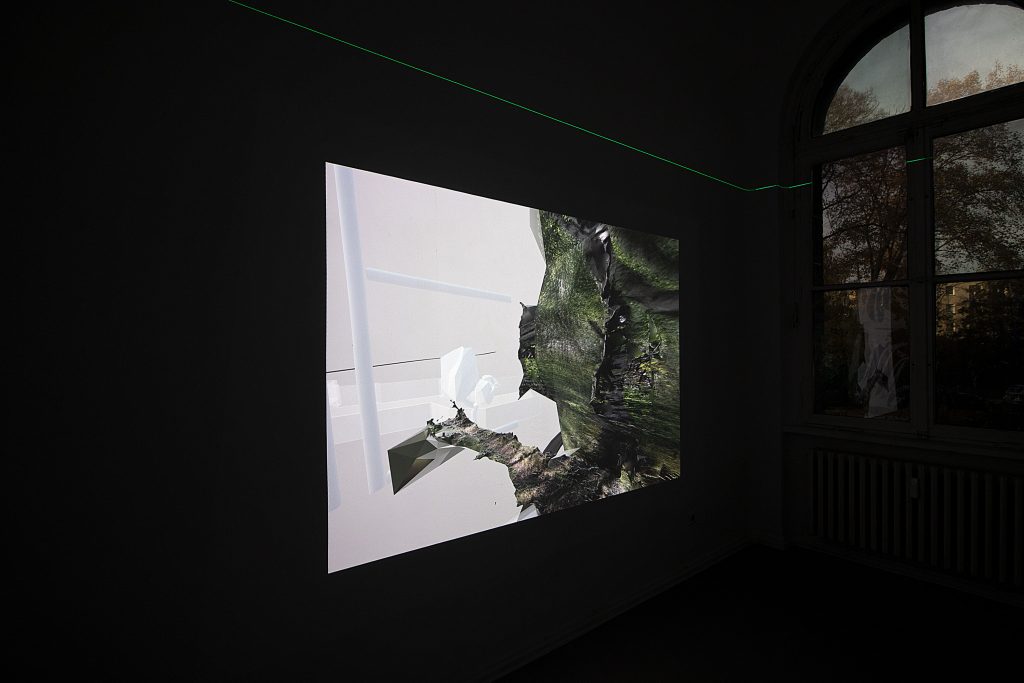
Digital Twin / Tarabya, interactive 3d environment, 2020 ongoing
9 images 
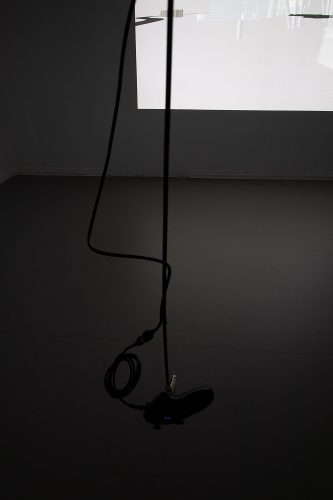 _IMG_5114
_IMG_5114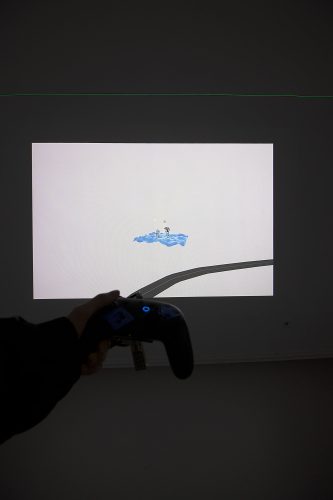 _IMG_5092
_IMG_5092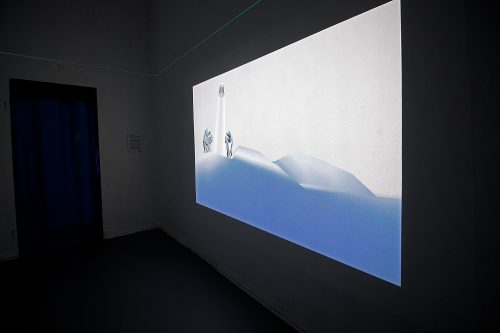 IMG_5102
IMG_5102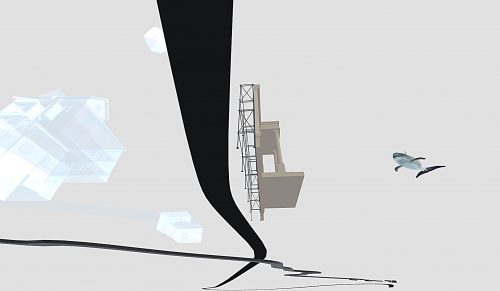 _Screenshot-2021-09-10-at-16.17.41
_Screenshot-2021-09-10-at-16.17.41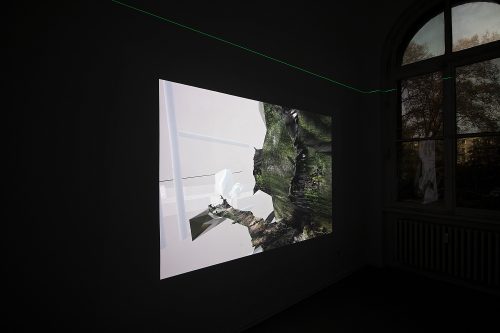 _IMG_5070
_IMG_5070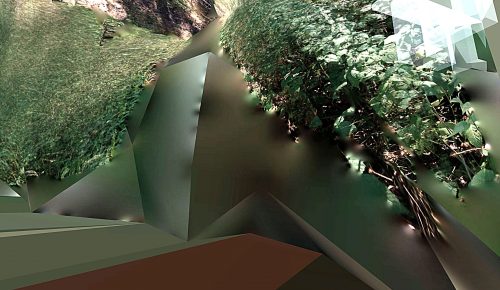 _Screenshot-2021-09-11-at-11.41.59
_Screenshot-2021-09-11-at-11.41.59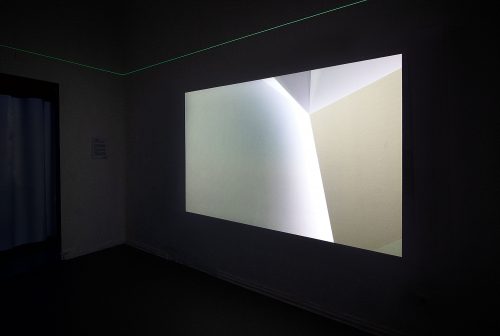 _IMG_5082
_IMG_5082 plan
plan
The 3d environment rebuilds the German embassy ground in Tarabya, Istanbul that is currently used as a residence for artists based in Germany. Started during the pandemic, the interactive model aimed to respond to the situation in isolation and to attempt a virtual escape. It turns into a phantom-like doppelganger addressing Tarabya’s colonial history and present, its relationship to the current city, its borders, as well as its potentials.
The digital model can be visited and explored through an avatar, similar to a computer game. It is open source and accessible online and it will keep on evolving. In the current state, it includes contributions by ten artists, activists, and cultural workers based in Turkey. Visitors are invited to move through the environment and intervene while sketching, commenting, or placing objects.
The collective work takes place at the intersection of art, architecture, and activism, as it reflects how practices, institutions, histories, and the present materialize in the (built) environment. The residence in Tarabya is a particularly interesting place, behind a wall in an affluent neighborhood, with a well-tended garden adjoined by a forest. The wooden buildings are bright white showing traces of political conflicts, eclectic architecture, and ornamentation from colonial times, overlapping with current representational and security requirements of an embassy site. In the past, all major European colonial powers had residences in Tarabya. Today, Erdogan owns a heavily secured summer palace nearby. The view of the Bosporus disrupts this context aesthetically as well as logistically.
Kunstraum Kreuzberg, Berlin
September 3 – October 31 2021
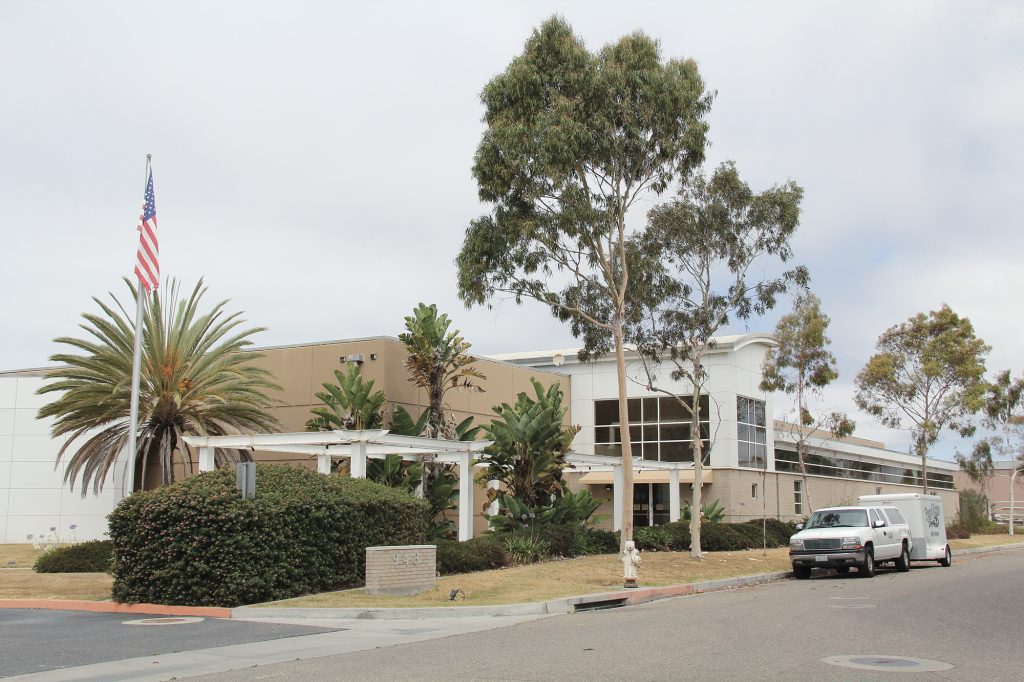
Series of c-prints, research, text, 2015/2021
7 images 
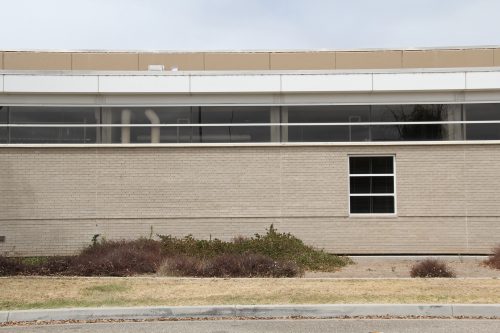 HomesOfTheInternetSeries2_serbest_mahall_2015
HomesOfTheInternetSeries2_serbest_mahall_2015 HomesOfTheInternetSeries3_serbest_mahall_2015
HomesOfTheInternetSeries3_serbest_mahall_2015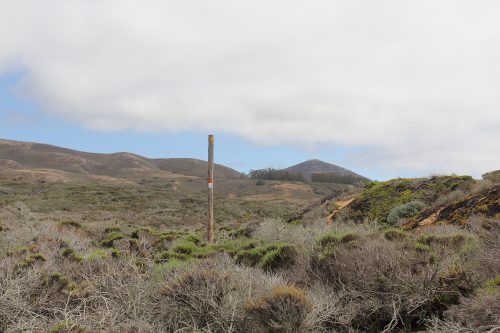 pole-IMG_9171
pole-IMG_9171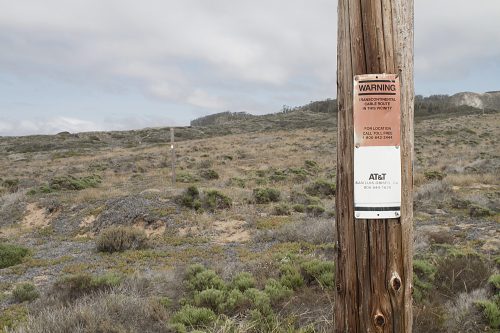 HomesOfTheInternetSeries9_serbest_mahall_2015
HomesOfTheInternetSeries9_serbest_mahall_2015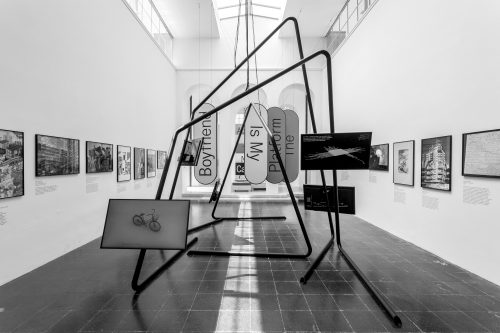 mg_3786.jpg-a4
mg_3786.jpg-a4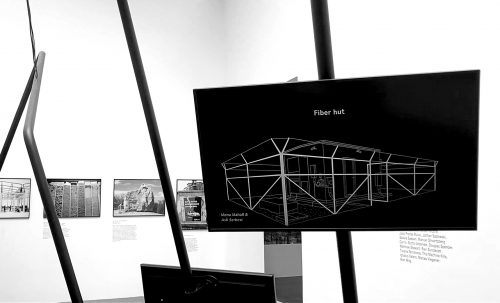 Screenshot-2021-06-05-at-13.26.35 A clone of modernish Californian architecture: subdivided into multiple sandy volumes, decorated with large and long white studio windows, a pergola, palm trees, banana plants and the American flag. The building is a suburban home of the Internet: a cable landing point in technical terminology. It houses ‘critical infrastructure,’ those fibre optic cables of which Google has already quietly purchased 102.362 km to build up and out its very own internet of tomorrow. As one of many dispersed ‘fibre huts’* this house embodies above ground what actually sits below: 1.126.540 km of submarine cables networked into a contemporary version of the Roman road system (Lovink, 2019). While Google concentrates on South America with the cables, it aims at Africa with its balloons…
Screenshot-2021-06-05-at-13.26.35 A clone of modernish Californian architecture: subdivided into multiple sandy volumes, decorated with large and long white studio windows, a pergola, palm trees, banana plants and the American flag. The building is a suburban home of the Internet: a cable landing point in technical terminology. It houses ‘critical infrastructure,’ those fibre optic cables of which Google has already quietly purchased 102.362 km to build up and out its very own internet of tomorrow. As one of many dispersed ‘fibre huts’* this house embodies above ground what actually sits below: 1.126.540 km of submarine cables networked into a contemporary version of the Roman road system (Lovink, 2019). While Google concentrates on South America with the cables, it aims at Africa with its balloons…
read more
Biennale di Venezia 2021, Austrian Pavilion
Art Center Los Angeles, 2015
With the support of Art Center Los Angeles / MDP.
Team: Nick Meehan, Selwa Sweidan, Erika Katrina Barbosa, Zhihan Ying
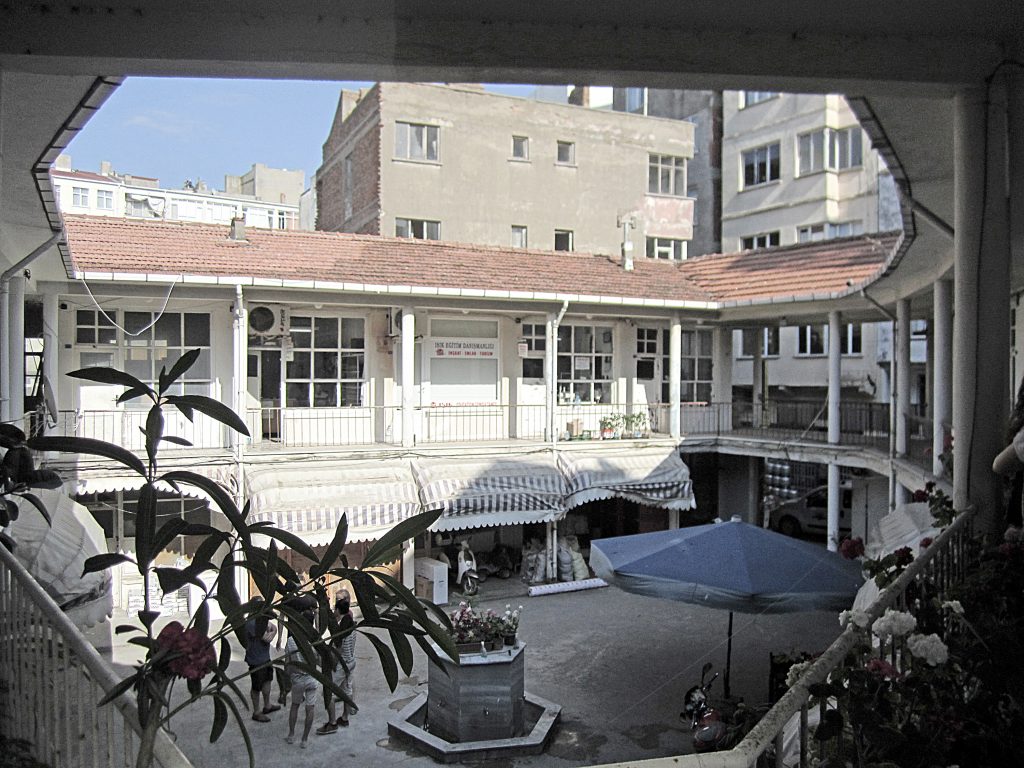
Conceptual framework and curation, 2019
17 images
 poster-photo-1
poster-photo-1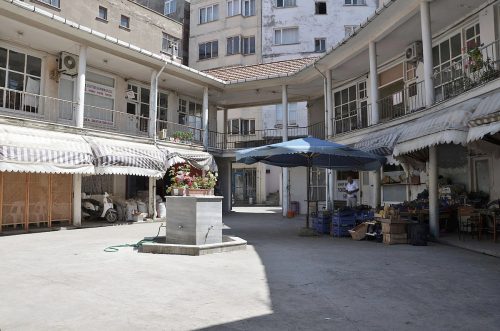 000HAL_2014
000HAL_2014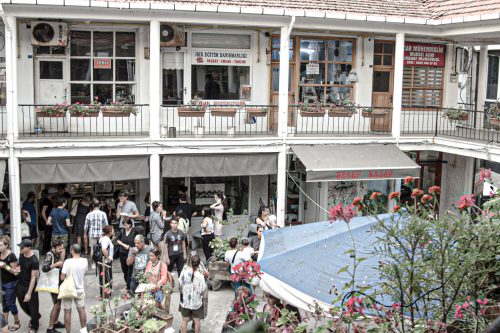 Sinop-Biennale-Foto1-Laura-Baumann
Sinop-Biennale-Foto1-Laura-Baumann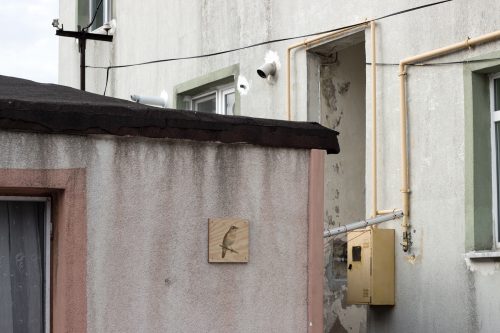 Sinopale_2019-08-16-011
Sinopale_2019-08-16-011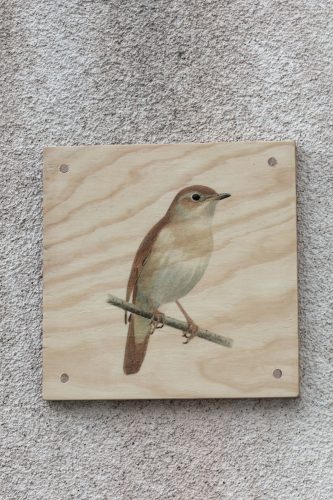 Sinopale_2019-08-16-010
Sinopale_2019-08-16-010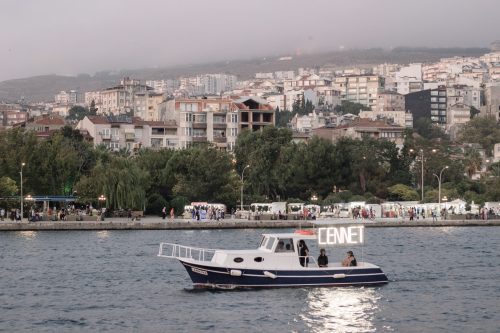 Banu-Cennetoglu-Cinnet-Cennet-Foto1-Laura-Baumann-08.2019_1
Banu-Cennetoglu-Cinnet-Cennet-Foto1-Laura-Baumann-08.2019_1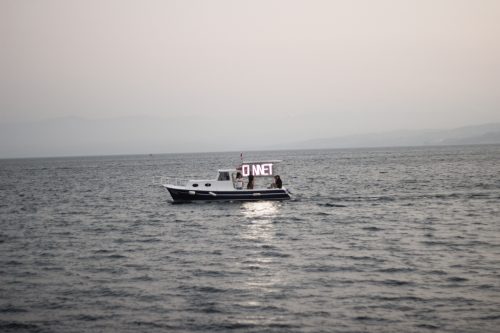 Banu-Cennetoglu-Cinnet-Cennet-Foto-Laura-Baumann-08.2019
Banu-Cennetoglu-Cinnet-Cennet-Foto-Laura-Baumann-08.2019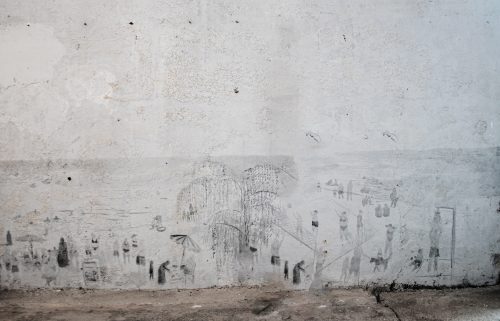 43_1244468
43_1244468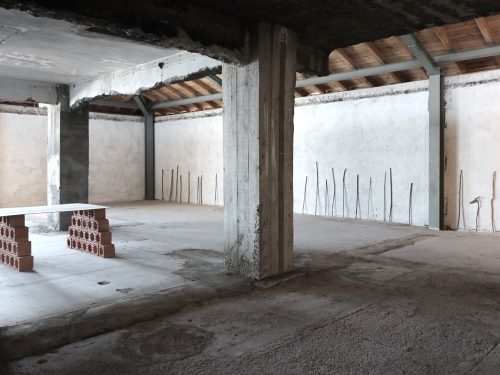 Slide23
Slide23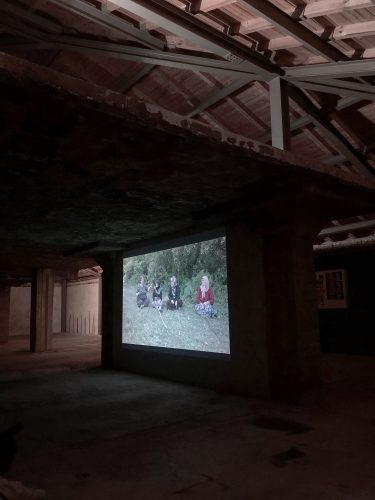 zIMG_1677
zIMG_1677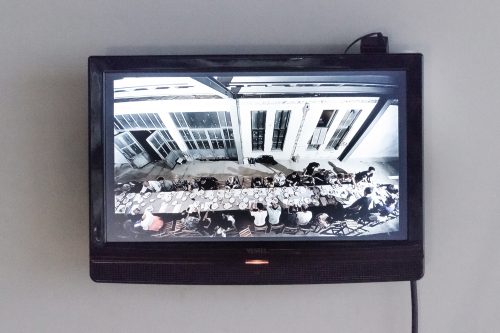 2019-08-25-007
2019-08-25-007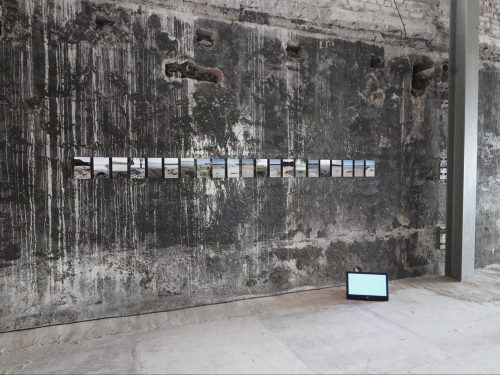 Slide24
Slide24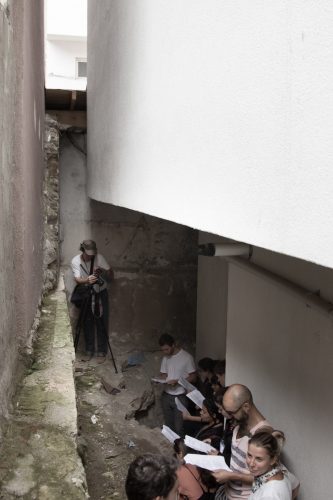 Lucas-Kalmus-Foto-Laura-Baumann-08.2019
Lucas-Kalmus-Foto-Laura-Baumann-08.2019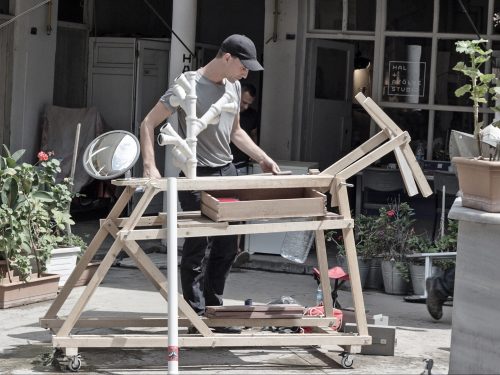 Slide20
Slide20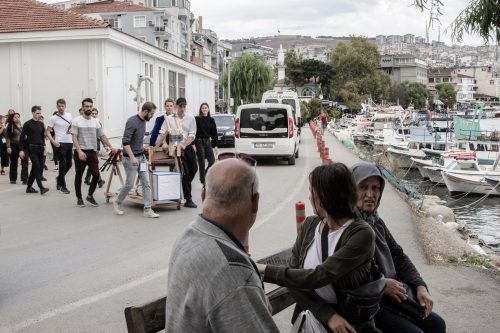 zz_03__Mobile-Albania_
zz_03__Mobile-Albania_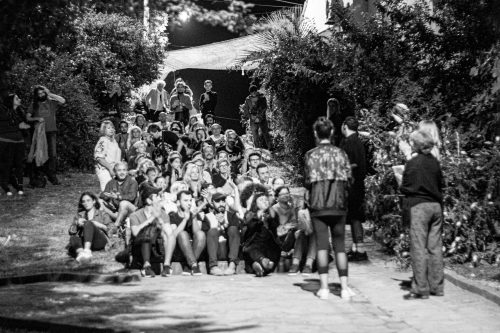 18_IMG_0772
18_IMG_0772
The Sinop Biennial is based on situated practices and collaborative processes. It finds a starting point at the former market place “Hal” in the center of Sinop, the northernmost coastal city of Turkey, to explore various localities in the Anatolian Black Sea region. Moving on collective routes, the aim is to gather diverse histories, experiences, and artistic inquiries in situ: in the local geo- and socio-political realities, the Black Sea’s archival and colonized landforms and body of water. They pass over nation states and contain fragments from the past and future; the memory of a Russian spy whale from Cold War times, as well as perfectly intact ancient ships deep down in the dark sea together with tons of plastics. They are the site of particular relations and rites, of acts of political resistance and historical persistence; of changing infrastructures and movements from those who left and those who arrived—deliberately or not.
The place is also shaped by national mythologies and suppressed histories. They call for a politics of location. Formulated by the feminist poet Adrienne Rich (1929–2012), a politics of location aims to reconnect thinking and speaking with a situated experience, a particularity, a geography, a body. It aims to reconnect what has been disconnected: politics to ongoing lives, claims to the ground they are coming from, to places, times, cultures, conditions, classes, and movements. Translated into the curatorial concept, in situ processes, that is situated practices, become important; on the one hand, these practices are opposed to the masculine that coincides with the fixity of objects or finished works just dropped and presented in a place and dwelling on stable differences between roles, subjects, and hierarchies. On the other hand, situated practices are opposed to a notion of locality as the site of foundational knowledge and fixed identity. Rather, they understand location as the place of experienced connections and intersections—through routes rather than roots, that means through the beings and things that pass by, stop, stay or leave. Therefore, situated practices engage in relations, they look at historical contact to recognize change and becoming through a series of encounters, contacts, and conflicts, on routes that enable and discipline the movement and displacement of beings and things.
Routes to follow at the Black Sea are: the Danube downstream into the Black Sea, Diogenes’ mythical travel from his hometown Sinop to Athens, the beltway connecting the six neighbors around the coast, the flows of oil, trash, data, swarms and pheromones from the Bosporus; to follow some of these routes might help us understand location as the relationship between things and beings.
While the biennial establishes contact zones on various routes, it is concerned with the potentials of discrepant movement, with tactics of translation and transgression, with encounters as political and aesthetic impulse. It aims to initiate active contacts and processes, establish collective practices between residents, guests, and (sub)urban region; it aims at art being produced rather than placed there, through transversal processes of conversation, translation and improvisation. We search for possible other and emancipated ways of connecting to things and beings, of recognizing and collectively producing alternative forms of knowledge with guests, the local environment and its inhabitants (animals, humans, plants, technology).
To move these forms of knowledge from the Black Sea Coast to Istanbul and other places, we produced an open and nomadic archive. There, the situated practices and collaborative processes will be continued and shared.
Conceptual framework by Asli Serbest and Mona Mahall
With contributions by Mobile Albania, Halil Altındere, Aristide Antonas, The Dynamic Archive, Elina Axioti, Mehtap Baydu, Banu Cennetoğlu, Övül Durmuşoğlu, Fulya Erdemci, Annika Eriksson, Hayırlı Evlat, Ana Filipovic, Marina Fokidis, Kevser Güler, Pauline Curnier Jardin, Philipp Mecke, Angela Melitopoulos, Mahir Namur, Samuel Nyholm, Pınar Öğrenci, Kemal Özen, Şener Özmen, theater.prekariat, For the Love of Bee! Collective, Kerstin Schroedinger, Hito Steyerl, Johannes Vogl, Sheri Wills, Brian Kuan Wood, Adnan Yıldız, Sibel Yılmazer, and others.
All photos by Laura Baumann.
Hal and Buzhane, Sinop
Mars, Istanbul
August 16—September 15, 2019
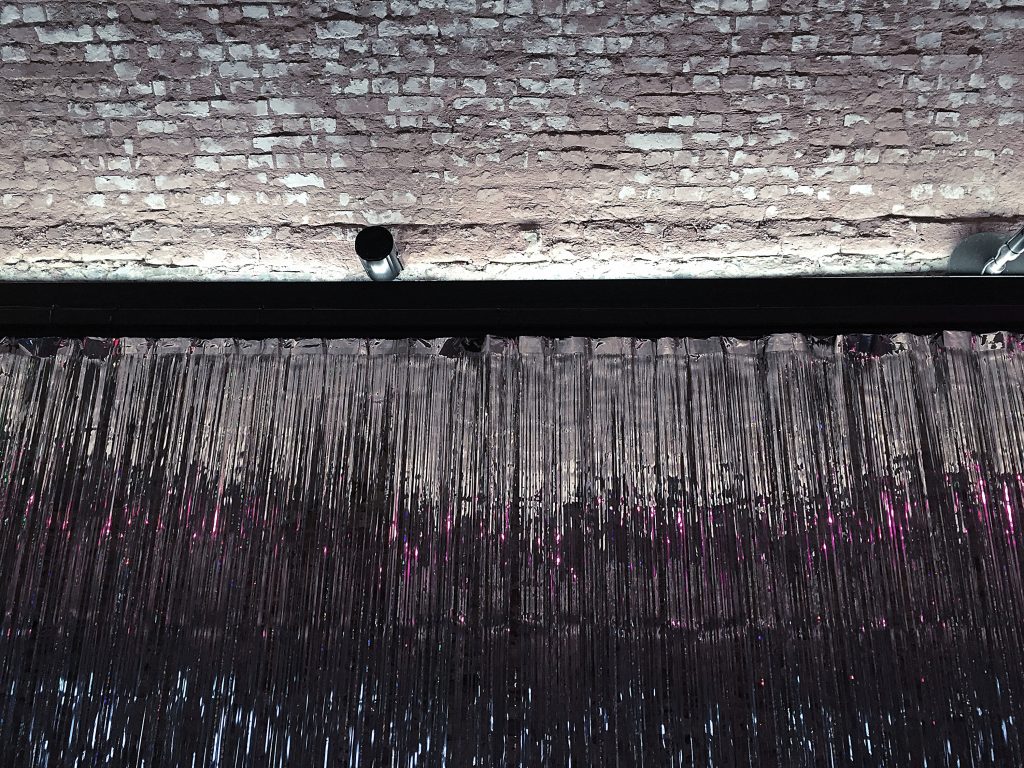
Research, spatial installation, video, 2016 10 images 
 01kocek
01kocek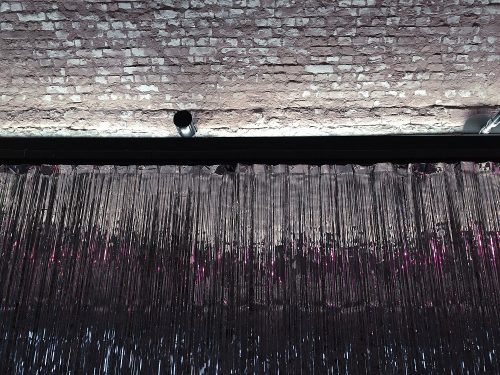 IMG_9343
IMG_9343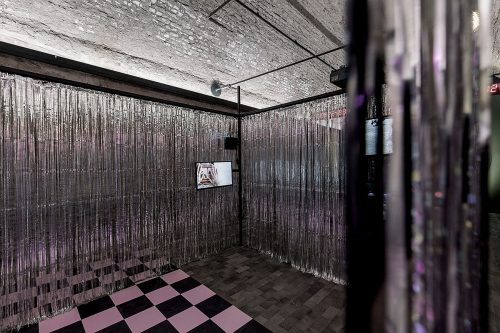 03kocek
03kocek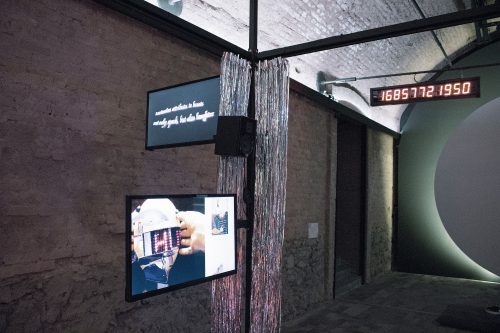 04-kocek-IMG_0860
04-kocek-IMG_0860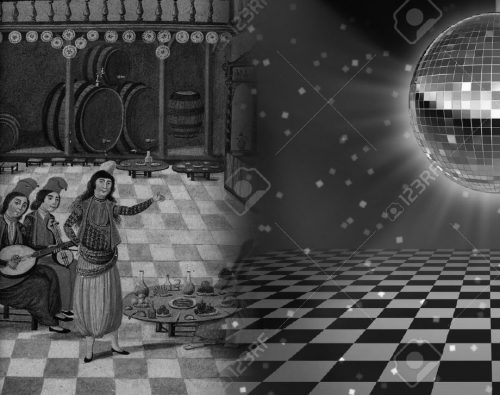 05_kocekDisco
05_kocekDisco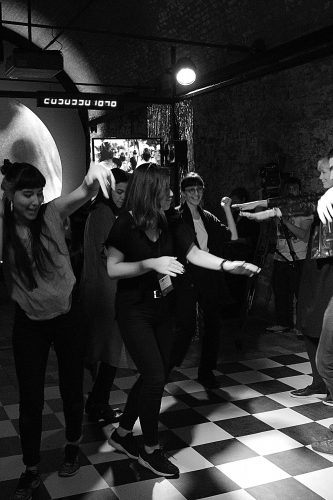 IMG_0958_bw
IMG_0958_bw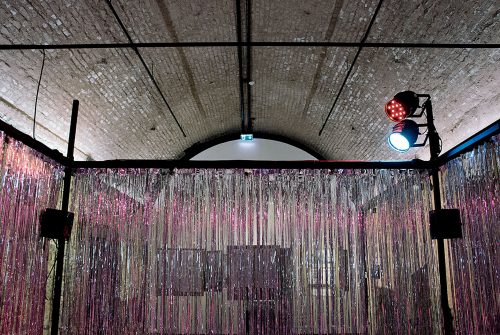 Screen-Shot-2016-10-24-at-21.01.10
Screen-Shot-2016-10-24-at-21.01.10 ananas
ananas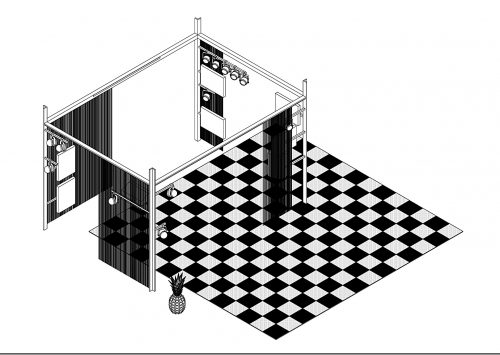 Screen-Shot-2016-06-25-at-19.50.04 The installation forms a (dance) space within the (museum) space, including video screens telling about the history of the “köçek.” The “queer boy” was a dancer, at the same time a slave and coveted star, of a courtly culture of pre-modern Islamic societies, in which more gender forms existed than allowed by the European masculine-feminine binary. The köçek performed mostly for male audiences and used various elements of self-design, including long, tiered skirts, tinsel, colorful silks, jewelry, and makeup. Colonial travelers identified the köçek as an effeminate, morally offensive (but desirable) figure of the deviant Orient. With modernization in the Tanzimat Reform (1839-1876), Ottoman civil and religious authorities adopted the Western heteronormative position and enforced strict censorship against the köçek, continuing today in homophobic policies.
Screen-Shot-2016-06-25-at-19.50.04 The installation forms a (dance) space within the (museum) space, including video screens telling about the history of the “köçek.” The “queer boy” was a dancer, at the same time a slave and coveted star, of a courtly culture of pre-modern Islamic societies, in which more gender forms existed than allowed by the European masculine-feminine binary. The köçek performed mostly for male audiences and used various elements of self-design, including long, tiered skirts, tinsel, colorful silks, jewelry, and makeup. Colonial travelers identified the köçek as an effeminate, morally offensive (but desirable) figure of the deviant Orient. With modernization in the Tanzimat Reform (1839-1876), Ottoman civil and religious authorities adopted the Western heteronormative position and enforced strict censorship against the köçek, continuing today in homophobic policies.
The installation was accompanied by weekly DJ sets and invited all visitors and staff into a queer environment – to dance, that is, to mobilize our politically passive bodies.
There exist various words for “dance” in Turkish.
oynamak — to play, act, dance
raks etmek — (from Arab raḳṣ) to dance
dans etmek — (from French danser) to dance
göbek atmak — lit. to throw stomach, to belly dance
kivirtmak — lit. to fold, dance sensuously
These words come as metonymy, ready-made, reimport, or as hybrid, mixing Arabic, Persian, or French with Ottoman languages. If they constituted an index, it would refer to a volume of ambiguous performative practices, of temporary spaces and designs in precolonial Islamic cultures, recorded through festival literature as well as through travelogues.
If these words for dance constituted a provocation, it would ask for what is it between the subject who dances and the subject who rules?
To address this question, the figure of the köçek, a professional young male dancer, performing to mostly male audiences at the Ottoman court from the 16th to the 19th century, might establish a historical link. Often times recruited or even kidnapped from the non-Islamic population of Greeks, Jews, Roma, or Armenians the young dancer would start a six-year long education, including playing accompanying instruments. As long as he was “moon-faced,” the köçek was to perform and use diverse elements of costume and self-design, including long, tiered skirts or loose pants (şalvar), shimmies, colorful silks, jewelry, make up, and long hair, to enhance his beauty. We say his beauty, but we know that in both, old and modern Turkish there exists no gender-specific pronoun.
This “queer boy” was a part of precolonial Islamic cultures that tolerated ambiguous (even contradicting) social and cultural forms; above all, more gender forms and also with different temporalities than the masculine-feminine binary of European human design. Perceived as “normal” in Ottoman culture, the köçek appeared shockingly deviant to European observers. To both he obviously was desirable:
Traveling to Constantinople in 1810, John Cam Hobhouse reports: „… here I saw a boy dancing in a style indescribably beastly, scarcely moving from one place, but making a thousand lascivious motions with his thighs loins and belly.“ Two days later he brought Lord Byron to see the performance.
In the first part of his improvised performances, the köçek would move to slow music using a veil or a shawl. The second part would be livelier, and the dancer would employ wooden clappers, shimmies of his shoulders and hips, and involve sexually explicit movements. He would mime stories to elaborate his songs, and sometimes he would include skilled athleticism, acrobatics, and mimicry.
If the köçek was appreciated as an artist, he was above all an object of desire and sexual attraction, and a subject of sexual services. His performances caused rampage among audiences and even murders—murders out of jealousy, not because of issues with sexuality. Sexuality, as a concept designed to discriminate all sexual activities between homo or hetero was simply not existing in pre-colonial Islamic societies. It was only introduced through European colonial modernization.
Importing their set of gender and sexual scripts to the Islamic world, European observers would describe the köçek as effeminate or cross–dressed, even though he had his own unique style, neither male nor female. Ultimately, the köçek was re-designed according to European norms of gender and sexuality: He became a “homosexual”, morally offensive figure of the deviant Orient. During modernization, in the Tanzimat reform era (1839-1876), both Ottoman civil and religious authorities adopted the Western position, renounced the köçek for lascivious behavior and enforced censorship policies.
Alt Art Space, Istanbul Design Biennial, 2016
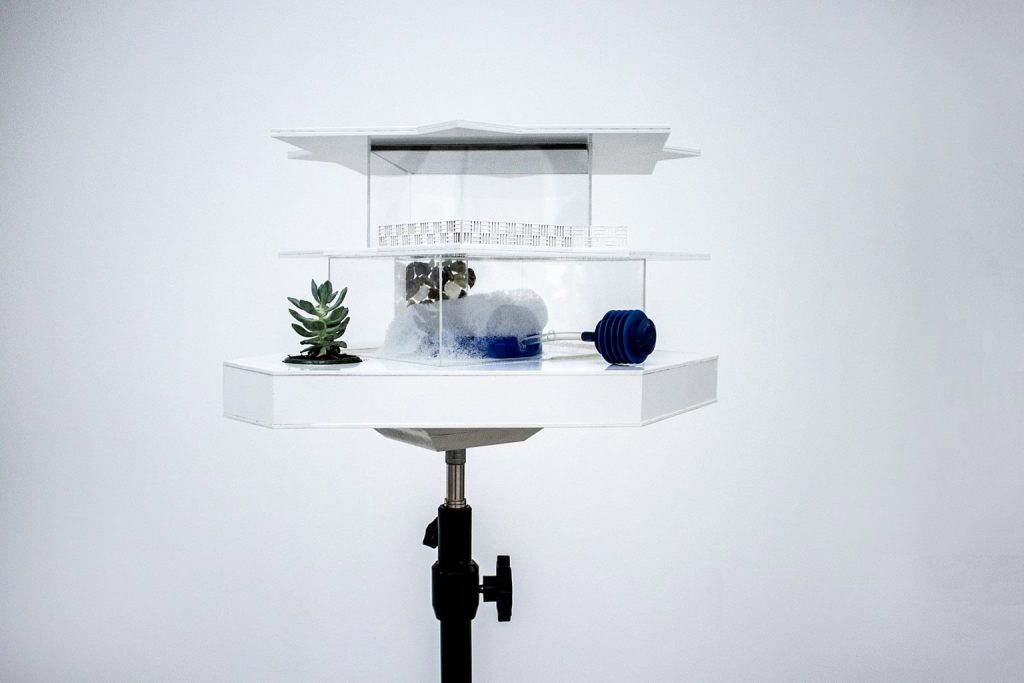
Model, acryl glass, stones, miniature plant, foam pump, 2018
5 images 
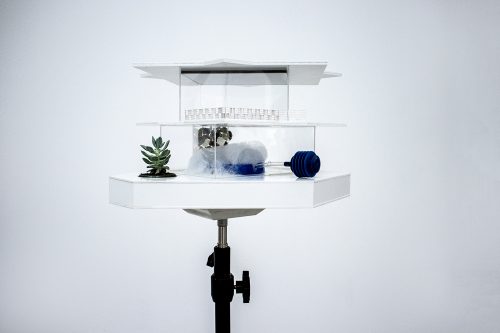 IMG_2921
IMG_2921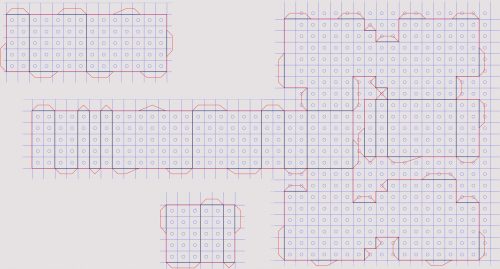 tiles
tiles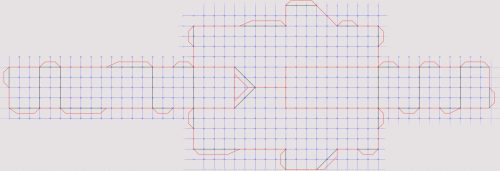 tiles2
tiles2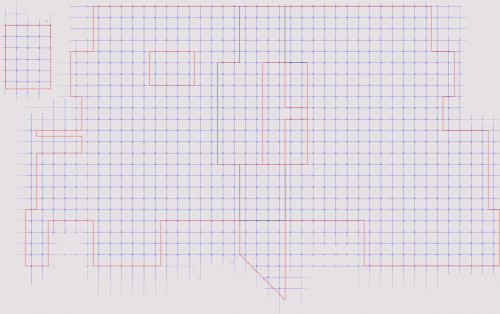 tiles1 From a series of fragmentary works and speculative research on feminist spatial utopias: The acryl glass object is a model and a mechanism at the same time; it portrays the Self-Cleaning House (Frances Gabe, 1984) and provides a tool to douche itself. The drawings show two completely (inside and outside) tiled houses unfolded, as well as a pattern of a zeppelin.
tiles1 From a series of fragmentary works and speculative research on feminist spatial utopias: The acryl glass object is a model and a mechanism at the same time; it portrays the Self-Cleaning House (Frances Gabe, 1984) and provides a tool to douche itself. The drawings show two completely (inside and outside) tiled houses unfolded, as well as a pattern of a zeppelin.
The original self-cleaning house that the American inventor also inhabited, implies questions about the role of technology in dismantling patriarchic formations, not so much as it aims at liberating the (female) homeworker, but rather as it gives an idea of women’s role in technological development. Contradicting the assumed rational and objective male space that integrates technology with prevailing structures of power, Frances Gabe’s house was a space where she felt safe and assured to engineer, learn, and experiment.
The project by Frances Gabe is a patented invention (patent number: 4428085) that consists of sixty-eight appliances to make the house clean and dry itself. By pressing a button, sprinklers in the ceiling of each room are activated, to clean the room with detergent and water followed by hot air drying. The building construction does not only clean the house but also clothes, dishes and even the dog house. The “giant dishwasher”, eliminates (mainly) women’s reproductive labor and unpaid housework, in a completing of the Frankfurt kitchen concept.
50 Years after 50 Years of the Bauhaus
Württembergischer Kunstverein Stuttgart
May 4—September 23, 2018
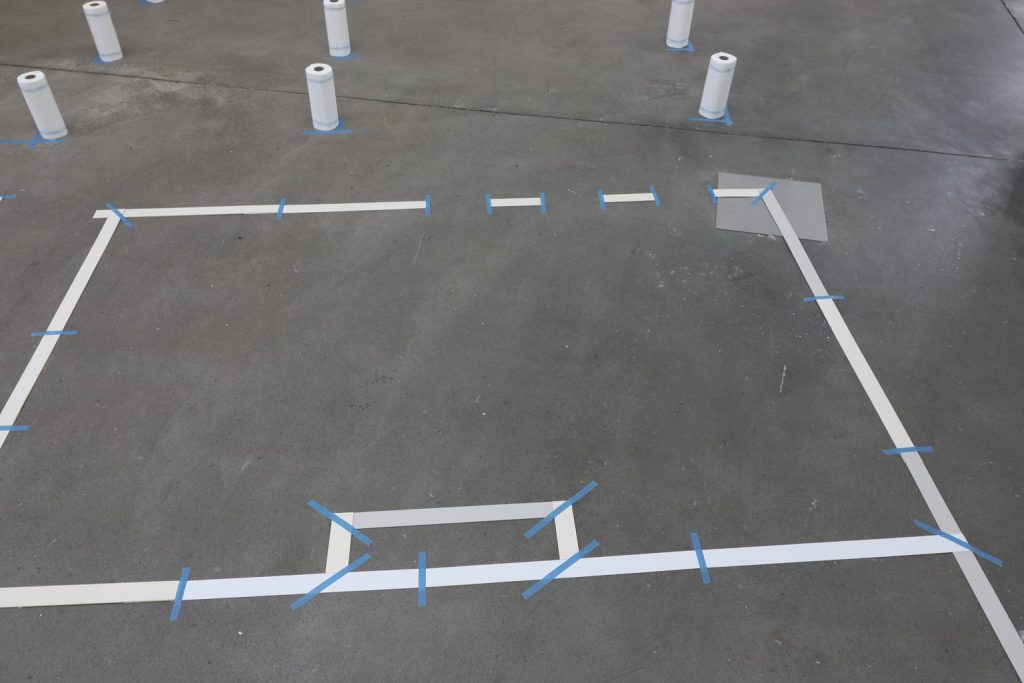
Installation, cardboard, tape, kitchen paper, 2019
4 images 
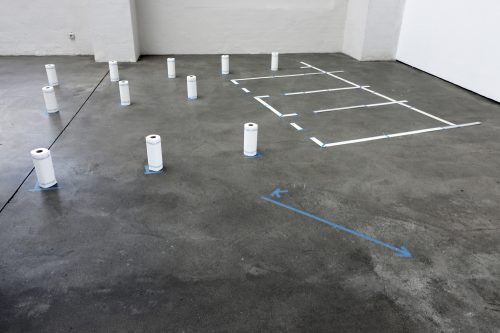 IMG_4208
IMG_4208 IMG_4225
IMG_4225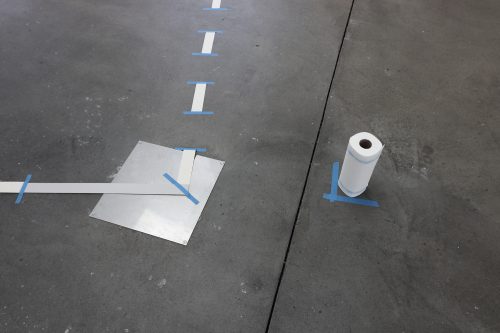 IMG_4227 As part of a series of fragmentary works and speculative research on feminist spatial utopias “n minus 1” responds to the Kitchenless House (1915) by architect Alice Constance Austin. By exploring the process of subtraction (apartment minus kitchen), the aim is to activate emancipatory ideas and practices that might help reshape our shared spaces.
IMG_4227 As part of a series of fragmentary works and speculative research on feminist spatial utopias “n minus 1” responds to the Kitchenless House (1915) by architect Alice Constance Austin. By exploring the process of subtraction (apartment minus kitchen), the aim is to activate emancipatory ideas and practices that might help reshape our shared spaces.
The installation alludes to a space opening up in between pillars in a floor plan where the kitchen is removed from the center. Instead, a fluid zone is produced blurring the borders between inside and outside and questioning fixed functions, conventions and usages. Perhaps the neighbors will pass through from time to time.
Exploring various situations and scenes that subtract from a given set of rooms, actors, and functions, the research is occupied with minor operations (Deleuze) that test aesthetic and political alternatives to modernist ideologies, based on the premise of endless growth.
Modernism has long been questioned for its grandios utopian aspirations regarded as bound up with paternalistic, colonial, and totalitarian attitudes. The n minus 1 drafts formulate not modernist major projects but concepts of minor operations that however allow for new spatial connections and relations. In that they provide the ground on which we might evolve more open social, political, and aesthetic forms of living together.
Kunsthalle Lingen
June 7—August 25, 2019
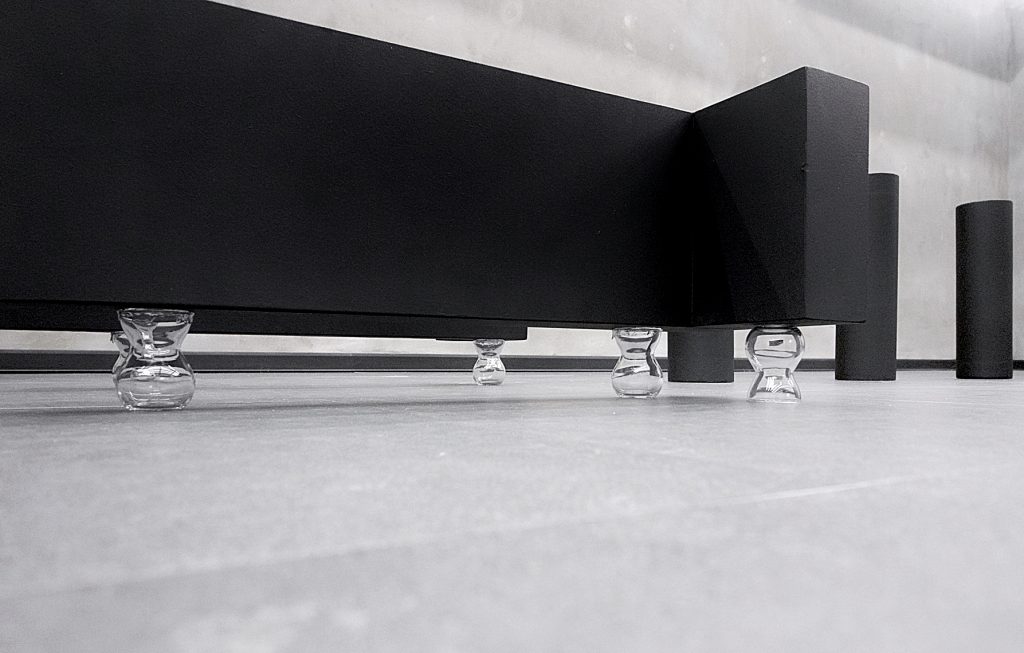
Installation, MDF, tee glasses, prints, text, video 2018
8 images 
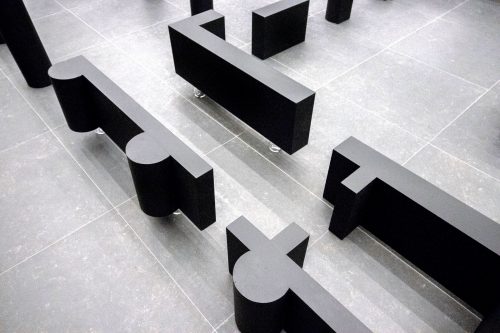 theHouseAliceBuilt-riverrun0
theHouseAliceBuilt-riverrun0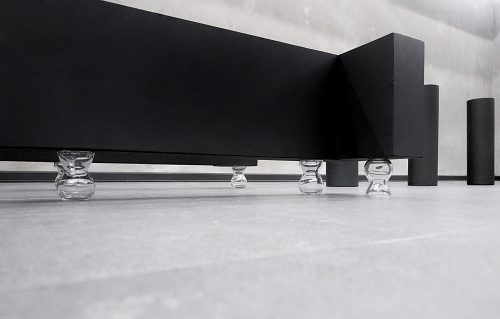 _05_TheHouseAliceBuilt_MonaMahall-AsliSerbest
_05_TheHouseAliceBuilt_MonaMahall-AsliSerbest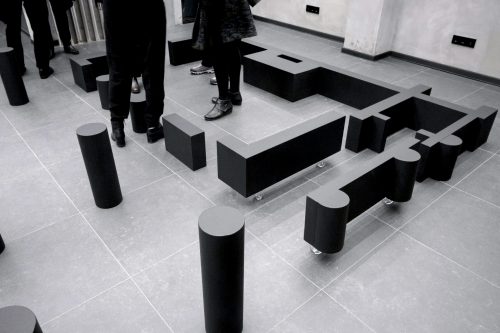 theHouseAliceBuilt-riverrun2
theHouseAliceBuilt-riverrun2 IMG_3934
IMG_3934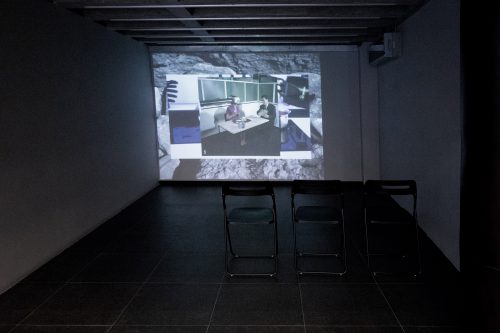 web_06_TheHouseAliceBuilt_MonaMahall-AsliSerbest
web_06_TheHouseAliceBuilt_MonaMahall-AsliSerbest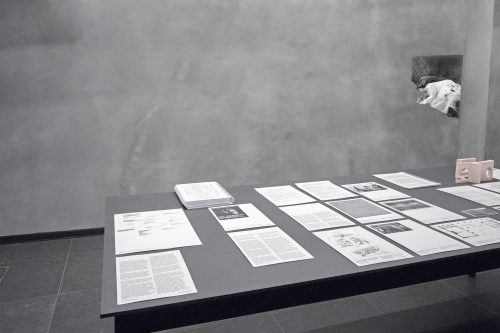 _web_IMG_3863
_web_IMG_3863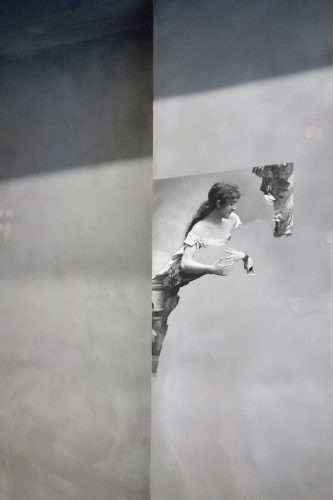 _web_IMG_3929 The model fragment results from a long-term research into (anti-)utopian projects that, informed by feminist theories and practices, have reimagined modern (domestic) space. It is part of a collection and speculation on houses and scenes that subtract from a given set of rooms, actors, and functions: these speculations remove the kitchen from the apartment, Romeo from Romeo and Juliet, the state from democracy, the patriarchy from almost any formation. Following a method of subtraction (n minus 1), they aim at a methodological activation of emancipatory ideas and practices to reshape our shared spaces.
_web_IMG_3929 The model fragment results from a long-term research into (anti-)utopian projects that, informed by feminist theories and practices, have reimagined modern (domestic) space. It is part of a collection and speculation on houses and scenes that subtract from a given set of rooms, actors, and functions: these speculations remove the kitchen from the apartment, Romeo from Romeo and Juliet, the state from democracy, the patriarchy from almost any formation. Following a method of subtraction (n minus 1), they aim at a methodological activation of emancipatory ideas and practices to reshape our shared spaces.
Modernism has long been questioned for its grandios utopian aspirations regarded as bound up with paternalistic, colonial, and totalitarian attitudes. The n-1 drafts formulate not modernist major projects but concepts of minor operations that however allow for new spatial connections and relations. In that they provide the ground on which we might evolve more open social, political, and aesthetic forms of living together.
The House Alice Built responds to the Kitchenless House (1915) by architect Alice Constance Austin: a residential building that was designed without a kitchen for a socialist community in California at the beginning of the 20th century. The architect eliminated the kitchen from the private dwelling, in order to communalize it. A central kitchen, serving the whole community, should instead be operated through paid professionals. The intention was to change not just the life of women and their situation of unpaid and invisible housework but also to question the social relations between the community members and their environment. The house was never fully realized, and the community existed only between 1913 and 17.
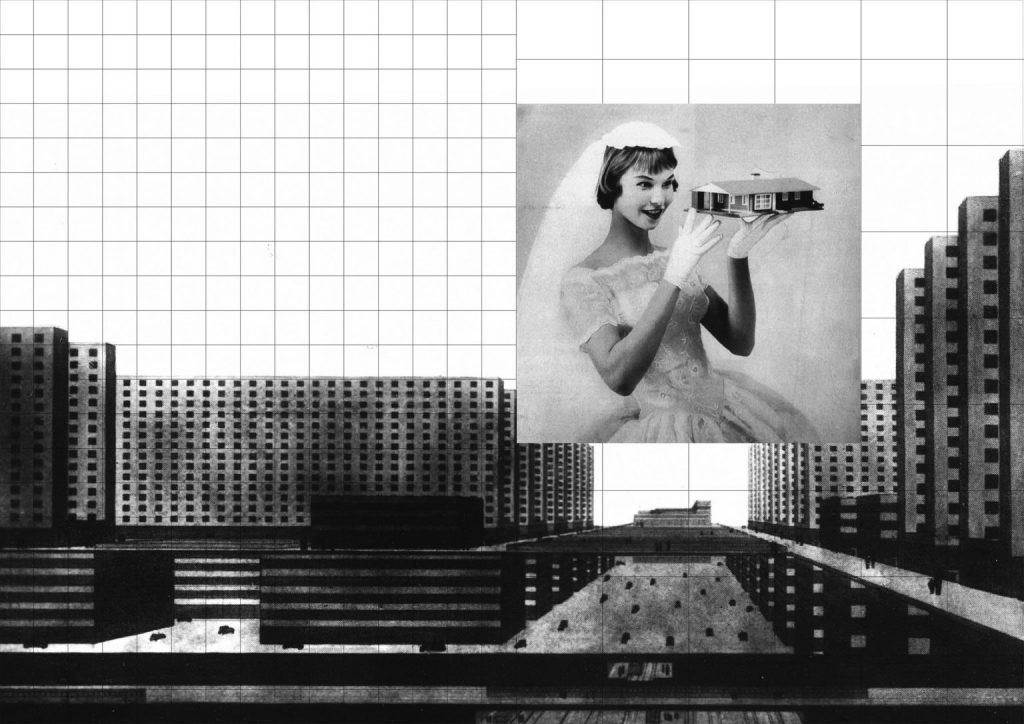
Speculative research and production, various media, 2018
5 images 
![]() _01_FemaleFutureLexiconOnSpace_MonaMahall-AsliSerbest
_01_FemaleFutureLexiconOnSpace_MonaMahall-AsliSerbest![]() _04_FemaleFutureLexiconOnSpace_MonaMahall-AsliSerbest
_04_FemaleFutureLexiconOnSpace_MonaMahall-AsliSerbest![]() _02_FemaleFutureLexiconOnSpace_MonaMahall-AsliSerbest
_02_FemaleFutureLexiconOnSpace_MonaMahall-AsliSerbest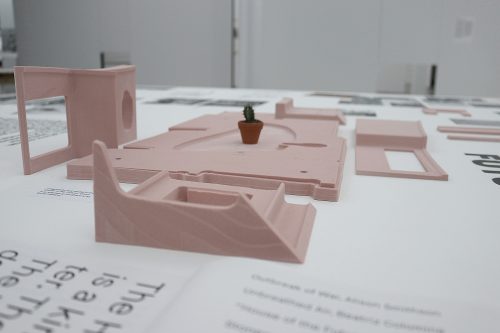 02a excerpt of the lexicon
02a excerpt of the lexicon
The installation explores currents of thought and practice—from 1918 to 2018 by way of 1968—that have produced alternative futures through a feminist perspective: architectural projections and speculations, utopian ideas and visions are introduced and discussed in a moment of political and social regression. Reacting to the ideological implications and effects of modernism, these works produce concepts for new material, social, political and aesthetic spaces.
Among others, the lexicon includes Shulamith Firestone, Alice B. Toklas, Maria Telkes, Eleanor Raymond, Marlene Moeschke-Poelzig, Alison Smithson, Alice Constance Austin, Frances Gabe, Varvara Stepanova, Janelle Monáe, etc. In terms of structure, the lexicon is developed as an open and growing archive that can go from a word to a phrase, from a drawing to a floor plan, from a video to a model, from an argument to an entire text.
If a short text by Walter Benjamin introduces the destructive character (1931) as the (modern) activity of clearing away, of making room—in need for fresh air and open space—it seems to read back a Bauhaus program. Through complete reduction, thereby deleting the traces of its age and rooting out of its own condition, the destructive character obtains the potential for a new beginning. The zero point, a tabula rasa of form, allowed to start anew, to produce neutral, ultimately cleared spaces that could even impede leaving traces, as Benjamin noted in reference to glass architecture.
Once combined with a (structural) grid, glass architecture could actually deliver fresh air and open space—at any scale, be it furniture, a pavilion, school, skyscraper, or a city. The generic and radically rational nature implied in the grid system with glass surface is explored by Ludwig Hilberseimer’s project for a Hochhausstadt (1924) organizing a city of three million inhabitants upon a calculation of one square window per person. In 1933, when the Gestapo accused the German architect and planner as “problematically left-wing”, Hilberseimer emigrated to the U.S. where he started teaching in collaboration with Mies van der Rohe at the Illinois Institute of Technology. Simultaneously, Walter Gropius was heading the Harvard Graduate School of Design in Cambridge. Both became those heroic figures, made in the U.S., that allowed for the consolidation (commodification) of Bauhaus modernism and its reimport to Europe.
From the U.S. Bauhaus returned not just as a style, a new tradition that allowed for the identification with a free and democratic, capitalist West against a Communist East, Bauhaus also signified a spatial matrix of recycled military technologies through which expanding capitalism could advance globally after the Second World War. Thus, it helped shaping a techno-political postwar space that was paradoxically exposed to the threat of complete destruction through a new global war.
With some impact, the radical architecture and neo-avantgarde movements of the 1960s and 1970s, as well as so-called postmodern tendencies confronted classical modernism. Yet, architecture and the production of space as a mode of social and political engagement with a feminist agenda has remained almost invisible. Therefore, the installation aims at making room for a fragmentary collection and production of videos, plans, images, and models of feminist visions, as possible other ways of imagining how to live together.
50 Years after 50 Years of the Bauhaus
Württembergischer Kunstverein Stuttgart
May 4—September 23, 2018
Schluss mit reden, spielen wir!
Kunsthalle Lingen
June 7—August 25, 2019
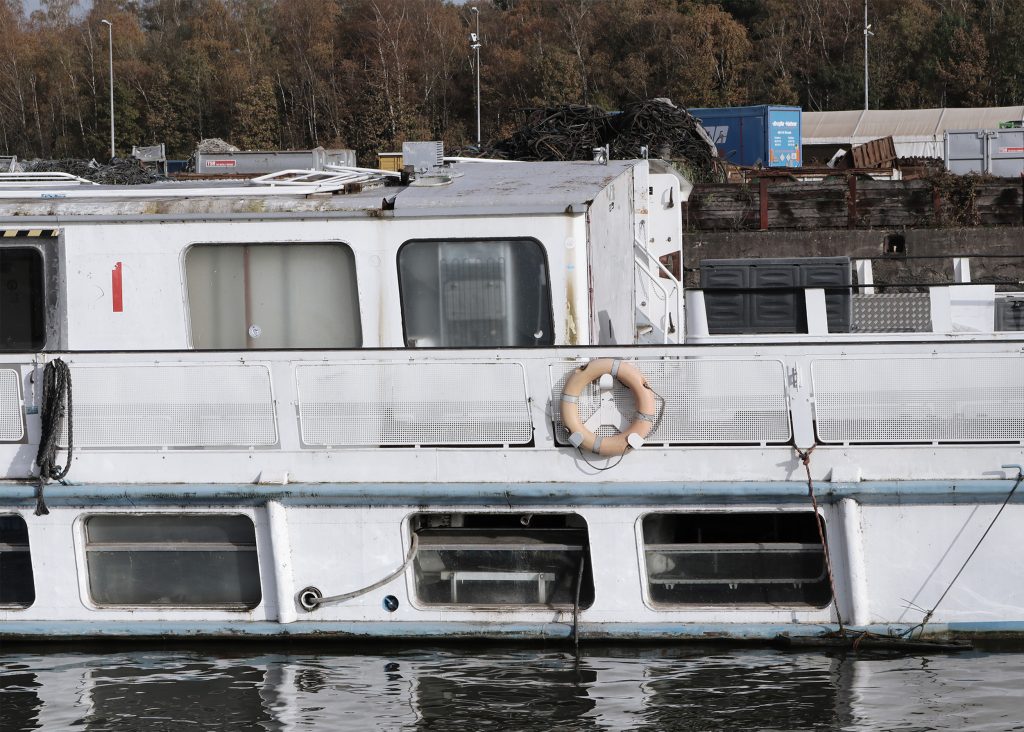
Concept and spatial intervention for a travelling art space, 2018
12 images 
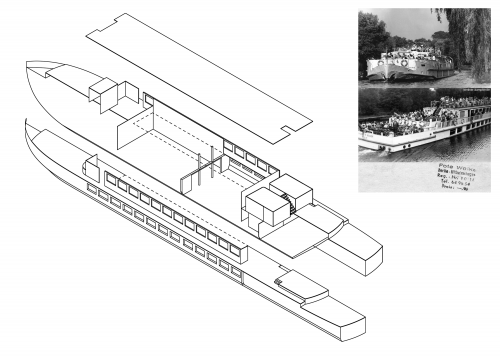 Mona Mahall Asli Serbest Dauerwelle Travelling Art Space_schiff_galerie4
Mona Mahall Asli Serbest Dauerwelle Travelling Art Space_schiff_galerie4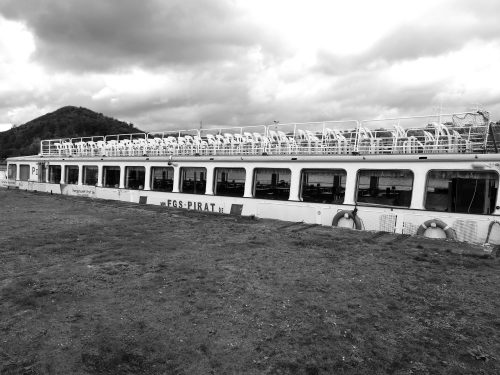 Mona Mahall Asli Serbest Dauerwelle Travelling Art Space
Mona Mahall Asli Serbest Dauerwelle Travelling Art Space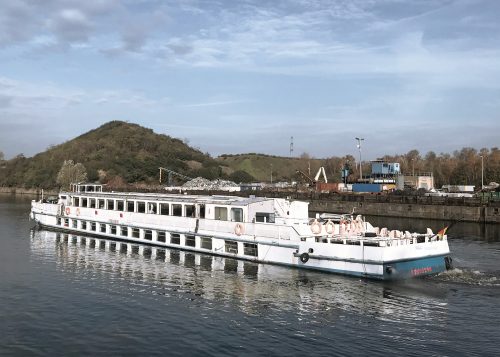 Mona Mahall Asli Serbest Dauerwelle Travelling Art Space
Mona Mahall Asli Serbest Dauerwelle Travelling Art Space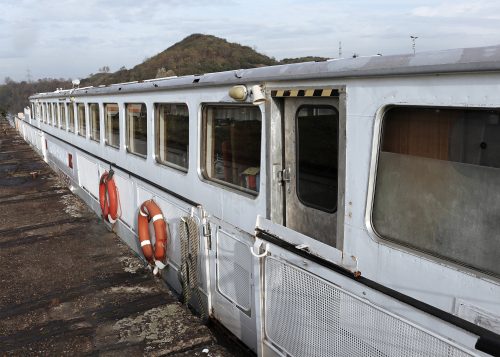 Mona Mahall Asli Serbest Dauerwelle Travelling Art Space
Mona Mahall Asli Serbest Dauerwelle Travelling Art Space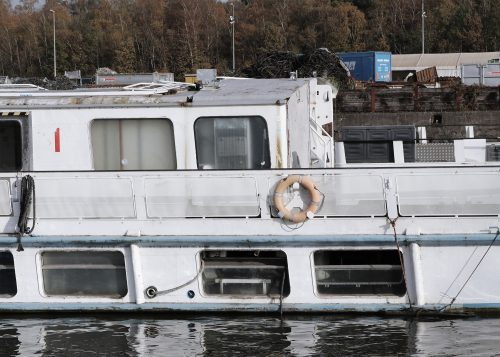 Mona Mahall Asli Serbest Dauerwelle Travelling Art Space
Mona Mahall Asli Serbest Dauerwelle Travelling Art Space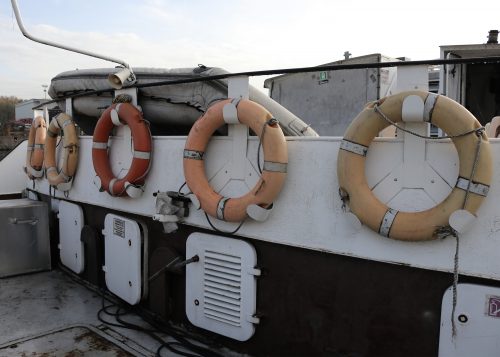 Mona Mahall Asli Serbest Dauerwelle Travelling Art Space
Mona Mahall Asli Serbest Dauerwelle Travelling Art Space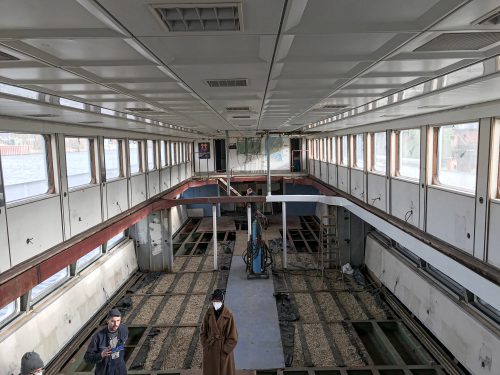 __IMG_5272
__IMG_5272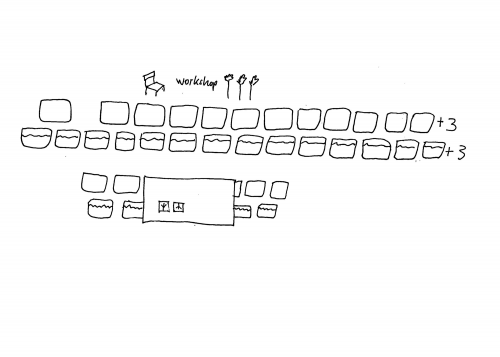 schiff_zeichnungen1
schiff_zeichnungen1 schiff_zeichnungen2
schiff_zeichnungen2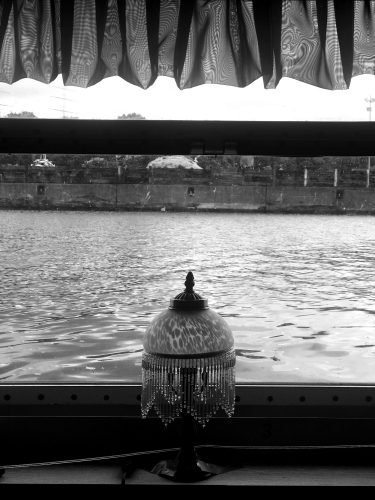 Mona Mahall Asli Serbest Dauerwelle Travelling Art Space
Mona Mahall Asli Serbest Dauerwelle Travelling Art Space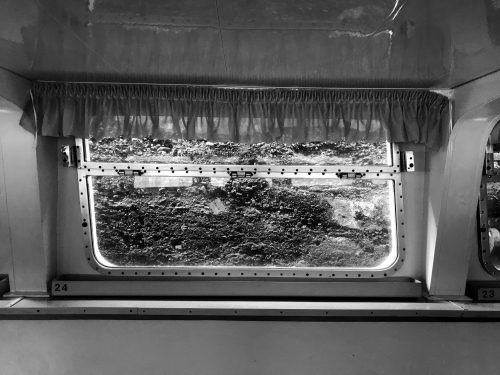 Mona Mahall Asli Serbest Dauerwelle Travelling Art Space video on the boat
Mona Mahall Asli Serbest Dauerwelle Travelling Art Space video on the boat
To think of a ship as an exhibition space on the move means to imagine it as active: not so much an art container that can be visited, but rather itself an act of visiting. A ship approaches different sites as a guest or intruder, as a temporary neighbor in different localities, in urban or rural places, in dense or more scattered areas. It questions static institutional thinking, fixed spatial settings and organizational infrastructures, as well as the idea of an unchangeable public.
The 1960s East German excursion ship is turned into a mobile space for exhibitions, workshops, and various other interdisciplinary events. Travelling on the waterways through European places, it addresses the existing relations between water and land, center and periphery, as well as conventions and practices in different spheres of art, life, and education. The subtractive alterations transform the ship interior into an open hall with windows in two rows and a curtain.
If the ship can be described as a placeless place, it is, more than that, an active infrastructure connecting and confronting things, beings, and ideas, colonial history with a colonial present, one-day excursions with flight; relations of power and exploitation, but also of desire and imagination.
Arguably, the ship forges other forms of exhibiting and coming together with things and beings, as it gets into various contacts, enables and calls for new collective processes and different forms of making and perceiving things. As a floating space without fixed ground, the ship is set up to allow for encounters as political and aesthetic impulse. This impulse is decidedly feminist, as the name Dauerwelle already implies.
Commissioned by Hochschule für Künste Bremen.
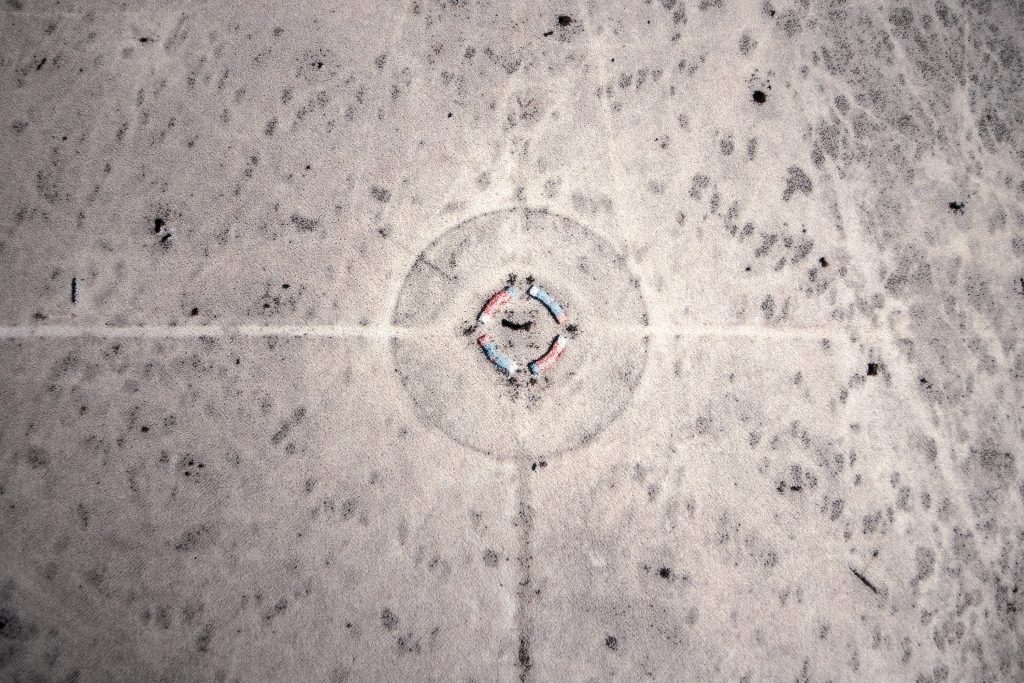
Spatial intervention, printed carpets, audio installation, 2017
8 images 
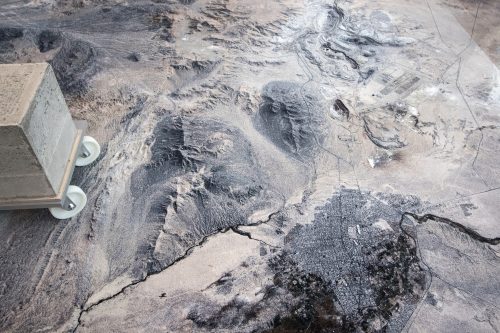 IMG_2025
IMG_2025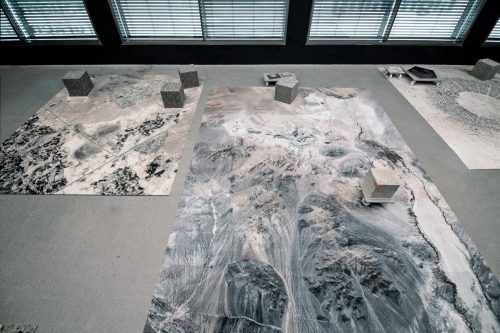 IMG_1792_1200@2x-1920x1280_n
IMG_1792_1200@2x-1920x1280_n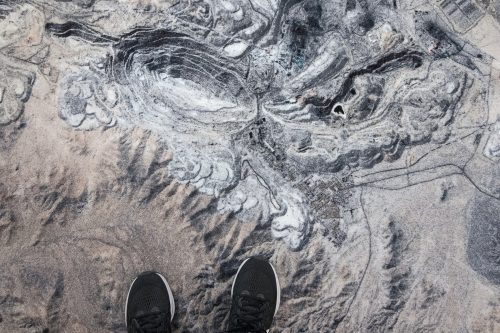 temporarycities
temporarycities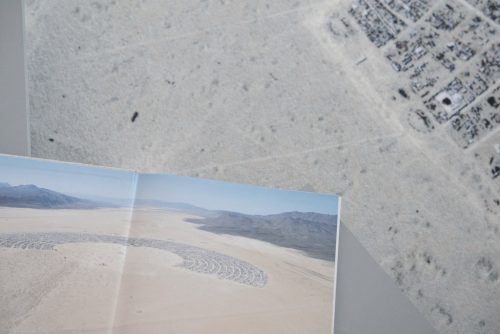 EU_LauraTrumpp_DSC_5942@2x-1024×684
EU_LauraTrumpp_DSC_5942@2x-1024×684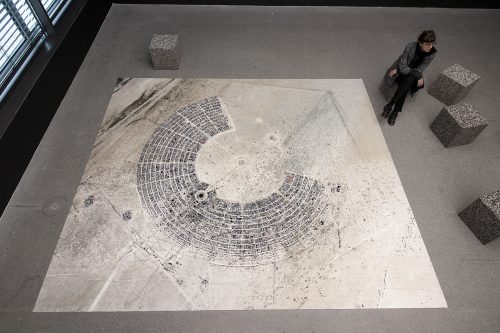 IMG_1486
IMG_1486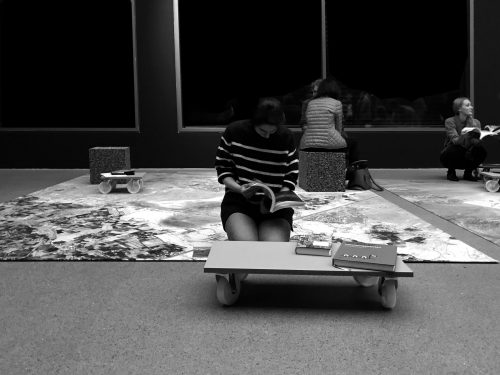 IMG_0675_b
IMG_0675_b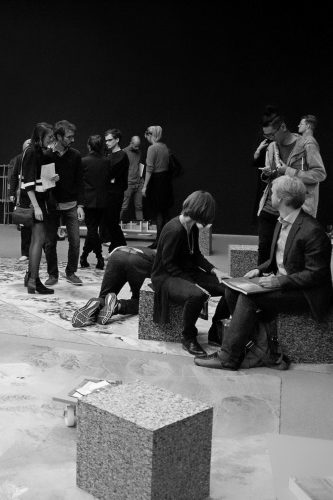 DSC_5591 The installation includes carpets printed with satellite images of various temporary cities, as well as documents, books and sound on their material forms, politics, sociologies, economies, and aesthetics. These heterogeneous urban forms are spread across the globe, but are all characterized by ephemerality. On the carpets they are related and confronted: a refuge with a festival, a market with a military camp. While these forms often share materials and structures, they exhibit the inequity that exists between the North and South, between citizens and non-citizens, between the Oktoberfest and Talad Rom Hoob, a railway market in Thailand.
DSC_5591 The installation includes carpets printed with satellite images of various temporary cities, as well as documents, books and sound on their material forms, politics, sociologies, economies, and aesthetics. These heterogeneous urban forms are spread across the globe, but are all characterized by ephemerality. On the carpets they are related and confronted: a refuge with a festival, a market with a military camp. While these forms often share materials and structures, they exhibit the inequity that exists between the North and South, between citizens and non-citizens, between the Oktoberfest and Talad Rom Hoob, a railway market in Thailand.
The audio piece contracts field recordings from heterogeneous ephemeral urban phenomena taking place remotely but often simultaneously. Throughout one year, sounds from different temporary cities across the globe, a festival in Germany (Oktoberfest) and a celebration in India (Kumbh Mela), overlap with noise from a railway market in Thailand (Talad Rom Hoob), a military camp in Afghanistan (FOB Lightning), and an extraction site in Chile (Chuquicamata) etc.
Two books in the installation:
The books of festivals (Ottoman: Sūr-nāme) were written and drawn to give detailed account on the Ottoman festivals that were famously lasting 40 days and 40 nights. These illustrated albums recount the celebrations in the Ottoman Empire from Renaissance time to the 19th century. They include the temporal order of processions, grand entrance of the Sultan, feasts, entertainers, musicians, dancers, gift giving, firework displays, circumcision and wedding ceremonies. They also contain information about the ephemeral elements that were developed by architects to serve the festival and spectacle. In 1582, Ottoman architects designed a moving vehicle which was carrying a blooding hand and foot separated from its body. Also in that year, architect Ibrahim Efendi designed performances on ropes over the Golden Horn, the waterway inlet of the Bosphorus and thus turned the event into an acrobatic show.
In his media theory French philosopher Régis Debray retells the story of the exodus of the Israelites from Egypt as the invention of the portable God. As a wanderer, Israel could not offer an altar or a statue to their God. Following Debray, they therefore declared these heavy objects as anyway forbidden. Instead, the Israelites developed light-weight objects like the tefillin, mini leather boxes containing scrolls of torah verses, to be read through magnifying glasses. In a materialist interpretation Debray asserts that these religious devices not only allowed transportation but also meant transformation: Transmission is not a simple transfer from a sender to a receiver, but “a chain of incessant transformations”. In these transformations “sender and receiver are modified from the inside by the message they exchange, and the message is itself modified by its circulation. He concludes: In transit, the Judaic God became a-topical, but accessible at any place and time. If we look at social media, digital market places, or online games today, all of them constituting sort of ephemeral cities, we might ask with Debray: in what ways do they transform the city as we know it?
Does Permanence Matter?
Pinakothek der Moderne, Munich 2017
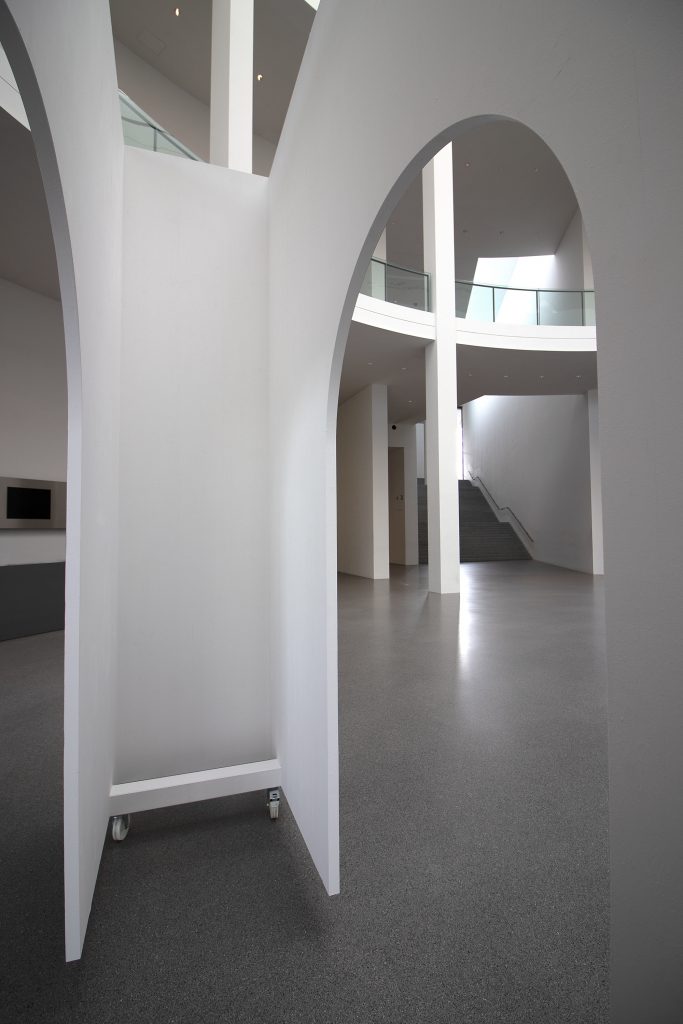
Object on castors, 2017
5 images 
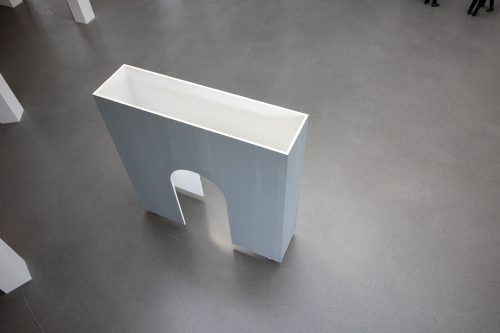 IMG_1901
IMG_1901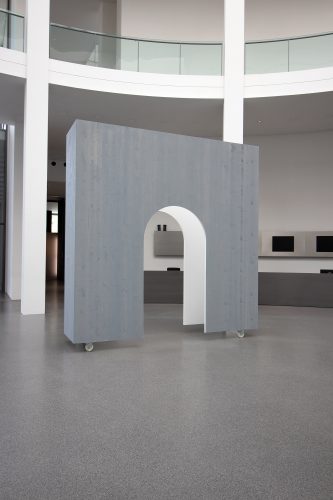 IMG_1881
IMG_1881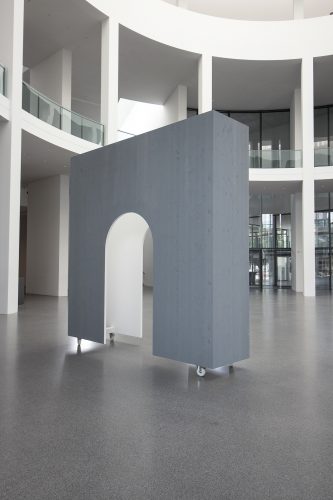 IMG_1882n
IMG_1882n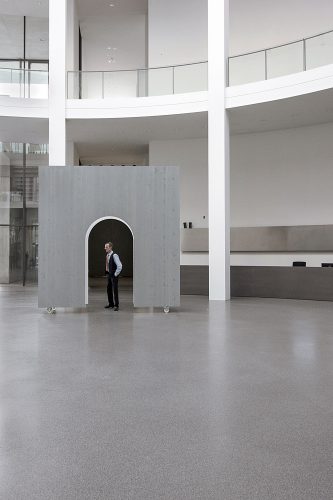 IMG_1494 Walter Benjamin asserts the importance of material presence to understand the city. In The Arcades Project, he includes direct quotations from Siegfried Giedion’s early work Construction in France to describe a modern iron and steel architecture, railroad stations, exhibition halls, winter gardens and department stores. However, by focusing on all kinds of decorative features in and around buildings, Benjamin goes beyond Sigfried Giedion’s purist (placeless and timeless) modernism. He recognizes in the ephemeral elements “material of vital importance for us … In any case, material of vital importance politically; this is demonstrated by the attachment of the Surrealists to these things, as much as by their exploitation in contemporary fashion.“
IMG_1494 Walter Benjamin asserts the importance of material presence to understand the city. In The Arcades Project, he includes direct quotations from Siegfried Giedion’s early work Construction in France to describe a modern iron and steel architecture, railroad stations, exhibition halls, winter gardens and department stores. However, by focusing on all kinds of decorative features in and around buildings, Benjamin goes beyond Sigfried Giedion’s purist (placeless and timeless) modernism. He recognizes in the ephemeral elements “material of vital importance for us … In any case, material of vital importance politically; this is demonstrated by the attachment of the Surrealists to these things, as much as by their exploitation in contemporary fashion.“
The spatial elements that emerge within ephemeral urbanism: stalls, draperies, and decorations, as well as containers, tents, and fences, collapse ‘cities of dream,’ to use Benjamin’s notion, with cities of painful actuality exhibiting the political, social, economic, and environmental disparity of our world.
Pinakothek der Moderne, Munich, 2017
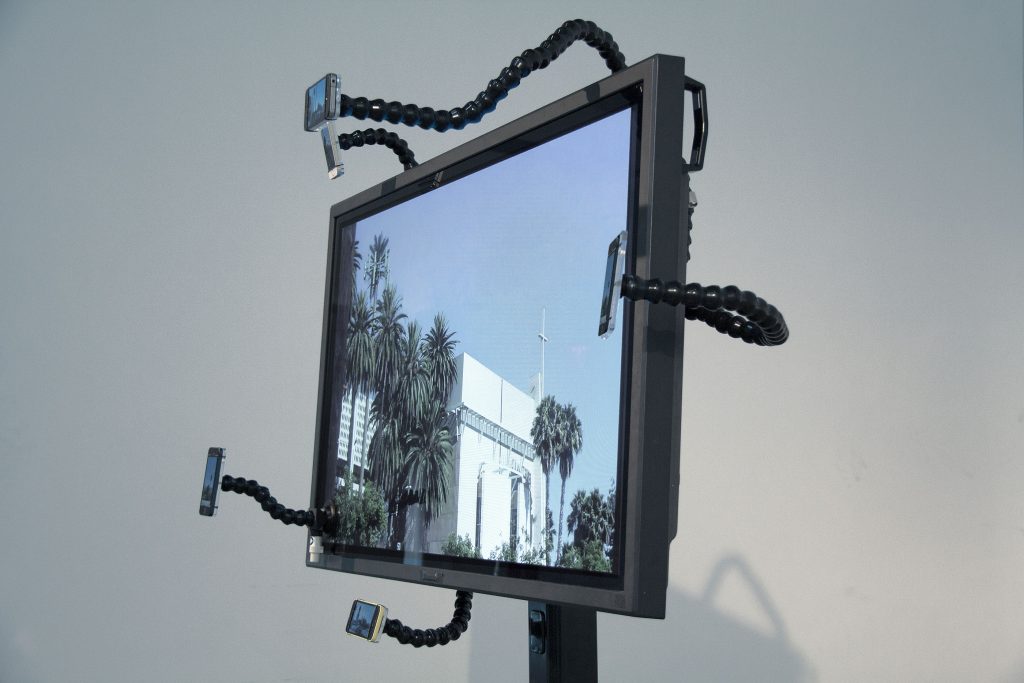
Installation, various media, 2015
12 images 
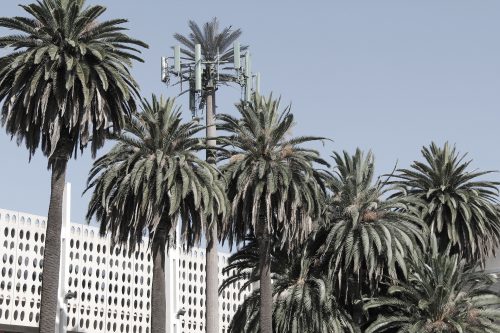 palmtree01
palmtree01 IMG_8239_1
IMG_8239_1 IMG_9285-1280×853
IMG_9285-1280×853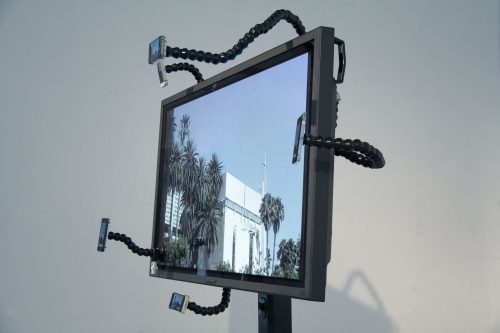 10naturalWifi-web_MG_9559-1
10naturalWifi-web_MG_9559-1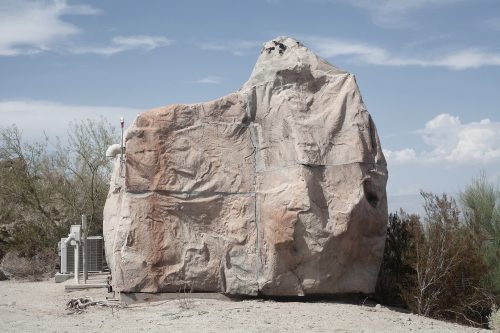 stones01
stones01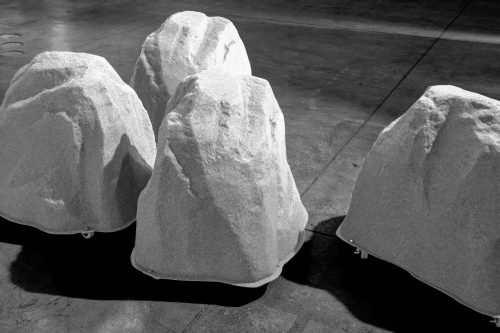 __stones_sw
__stones_sw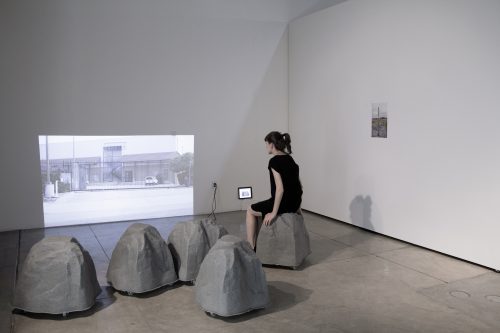 stones
stones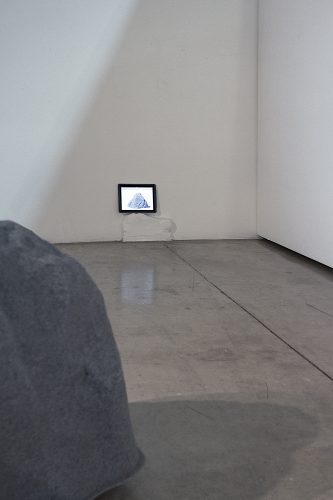 _MG_9587
_MG_9587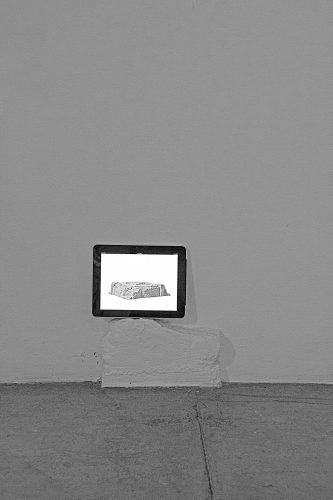 _MG_9593
_MG_9593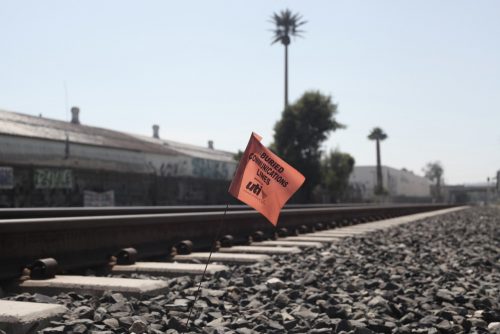 IMG_8155-1280×854
IMG_8155-1280×854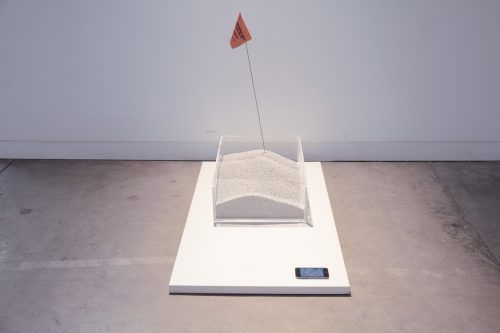 MG_9567-1920×1280 excerpt from video
MG_9567-1920×1280 excerpt from video
‘Natural Wifi’ explores the material culture of the Internet to chart the shifted social relationships towards ‘Natural Wifi’ explores the material culture of the Internet to chart the shifted social relationships towards technology, ‘nature’ and between us. Through the lens of Los Angeles’ evolving techno-landscape it looks for nature’s synthetic and symbolic presence within our digital and physical spaces. The artificiality of ‘nature’ and the naturalness of technology are reflected in urban as well as private spaces, in how we relate to others.
The installation brings together various media and objects that show cosmetic or camouflage efforts to hide technological devices in the Californian area: cell tower concealments in the form of fake palm trees, cacti, and conifers, or plastic stones and boulders commonly used to hide various technical and electric equipment. At the same time, the archive documents those signs that explicitly refer to the Internet’s material infrastructure, that is, fibre optic cables, buried underground and designated as “critical infrastructure” by Homeland Security.
We hear excerpts taken from an interview with a TaskRabbit employee, hired to talk about her work and exchange her experiences with the platform, the app, and employers.
With the support of Art Center Los Angeles / MDP.
Team: Nick Meehan, Selwa Sweidan, Erika Katrina Barbosa, Zhihan Ying
Art Center Los Angeles, 2015
Shenzhen Bi-City Biennale, 2015
Biennale di Venezia, 2021
e-flux Brooklyn, 2022
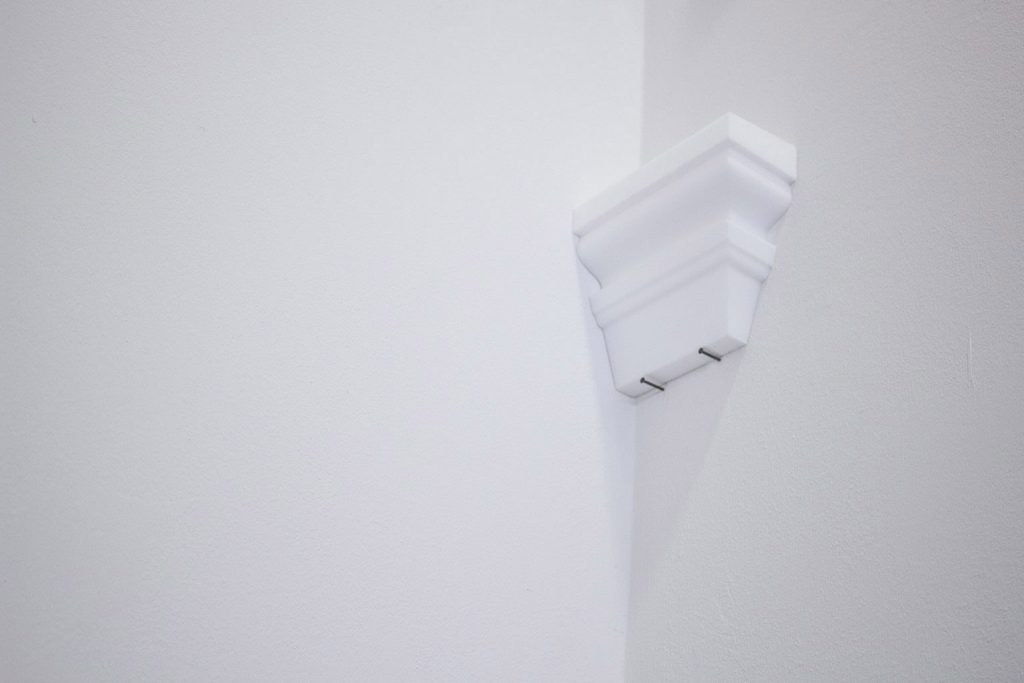
Collaborative speculative research and production, various media, 2015
10 images 
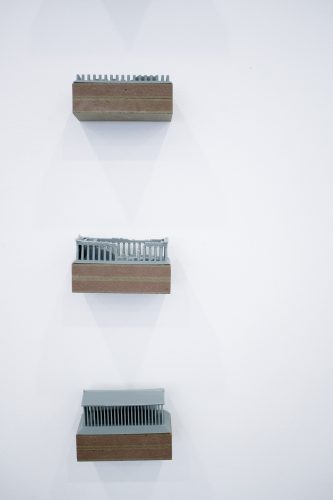 _IMG_8615_1
_IMG_8615_1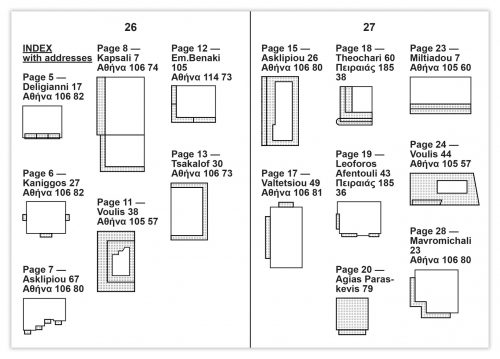 balcony14-white-1-1920×1379
balcony14-white-1-1920×1379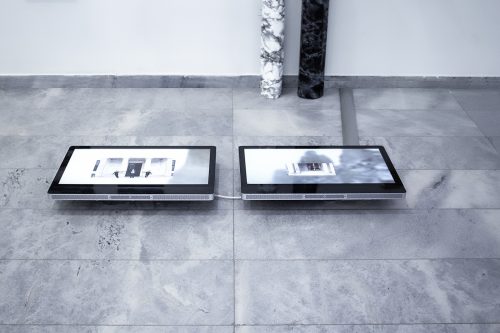 17-spuren-spuren_athens_monitore
17-spuren-spuren_athens_monitore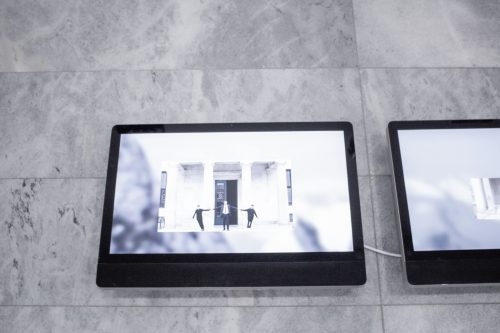 monitore
monitore athens_hermes1
athens_hermes1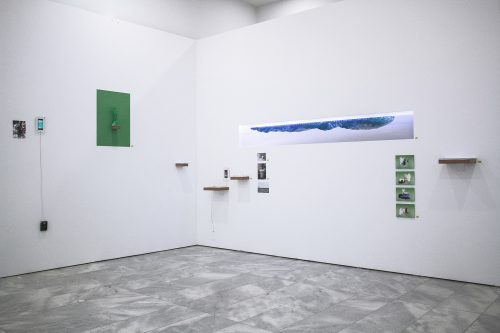 ...
...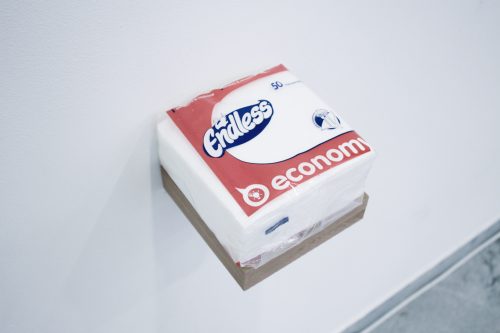 _IMG_8407_1
_IMG_8407_1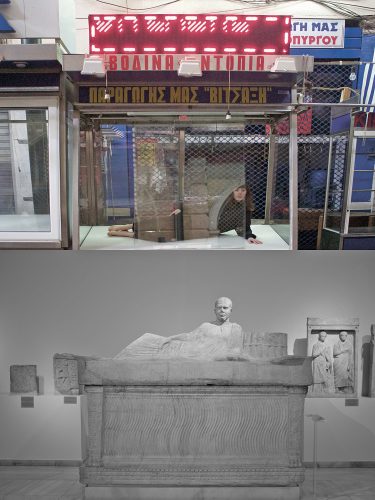 IMG_0159
IMG_0159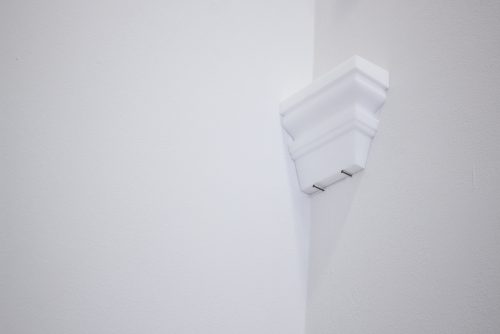 kapitell Conceived as speculative research on the current city of Athens, Spuren spuren applies the concept of collecting and producing traces at the same time. With this in-between process, Mahall/Serbest, together with Adelheid Schulz, aim at recording as well as triggering events and interventions in the city. Two snakes, capital (crisis), beach huts, a desert, and Hölderlin traverse these events and challenge strict oppositions between subject and object, between origin and derivative. They help questioning whether traces can be linked to any origin at all. Can there be determined one source at all, and can localities be maintained in the age of the Internet, enabling complete medial connectedness and diffusion?
kapitell Conceived as speculative research on the current city of Athens, Spuren spuren applies the concept of collecting and producing traces at the same time. With this in-between process, Mahall/Serbest, together with Adelheid Schulz, aim at recording as well as triggering events and interventions in the city. Two snakes, capital (crisis), beach huts, a desert, and Hölderlin traverse these events and challenge strict oppositions between subject and object, between origin and derivative. They help questioning whether traces can be linked to any origin at all. Can there be determined one source at all, and can localities be maintained in the age of the Internet, enabling complete medial connectedness and diffusion?
Spuren spuren is set up as an open working space. Besides a presentation within the exhibition-space the latter becomes a place of production, of an ongoing process. During the exhibition a travel agency is installed, Greek language courses are offered. A seminar on the golden ratio is taking place. The exhibition becomes an open space. Package holidays and Ouzo refer to Germany’s post-war period clichés concerning Greece. The inclusive situation is part confrontation with well-known preconceptions (especially intact during the crisis) while at the same time opportunity to get involved in conversations about the present.
Team: Wencong Li, Julia Zumkeller, Ioannis Michailidis, Sümeyye Yigit, Pavlina Zika, Lina Müller, Rafal Wójcik, Georgios Katsanos, Riin-Kärt Ranne, Anastasia Thanou, Katarzyna Wierzchnicka, Yuxuan Hu, Juliane Schwarz, Christos Antoniou, Philipp Schell, Billur Damla Üfler, Sarah Yaparsidi
With the help of Chrissi Nasz.
Württembergischer Kunstverein Stuttgart, 2015
Many thanks to Hans Christ, Keller Easterling, Marina Fokidis, Elina Axioti, Andreas Angelidakis, Aristide Antonas, Angelo Plessas, Evelyn Steiner.
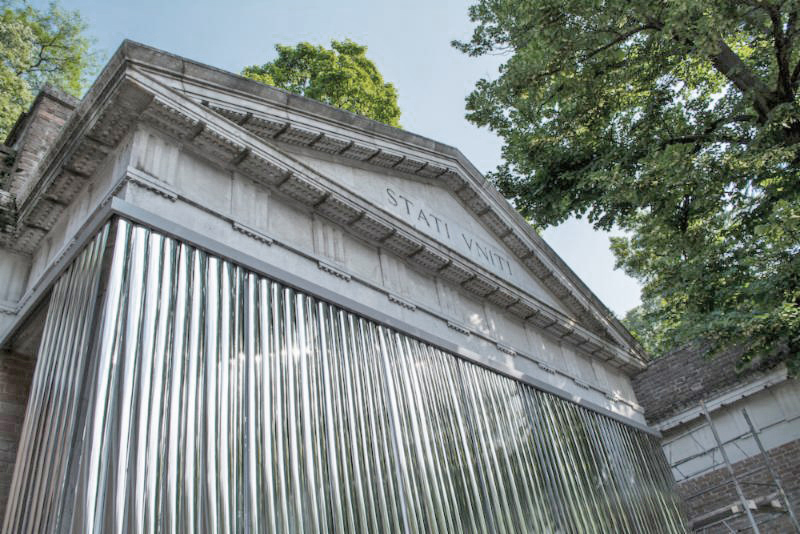
Site-specific and speculative work, programming, workshops at Biennale die Venezia 2014
officeus.org
Through different media and formats, the collaborative work investigates architecture and the production of space as part of global, post capitalist culture.
The US Pavilion at the Biennale di Venezia, Biennale di Venezia, 2014
This project was produced as part of OfficeUS, a project of the U.S. Pavilion, commissioned by Storefront for Art and Architecture, at the 2014 International Architecture Exhibition – la Biennale di Venezia.
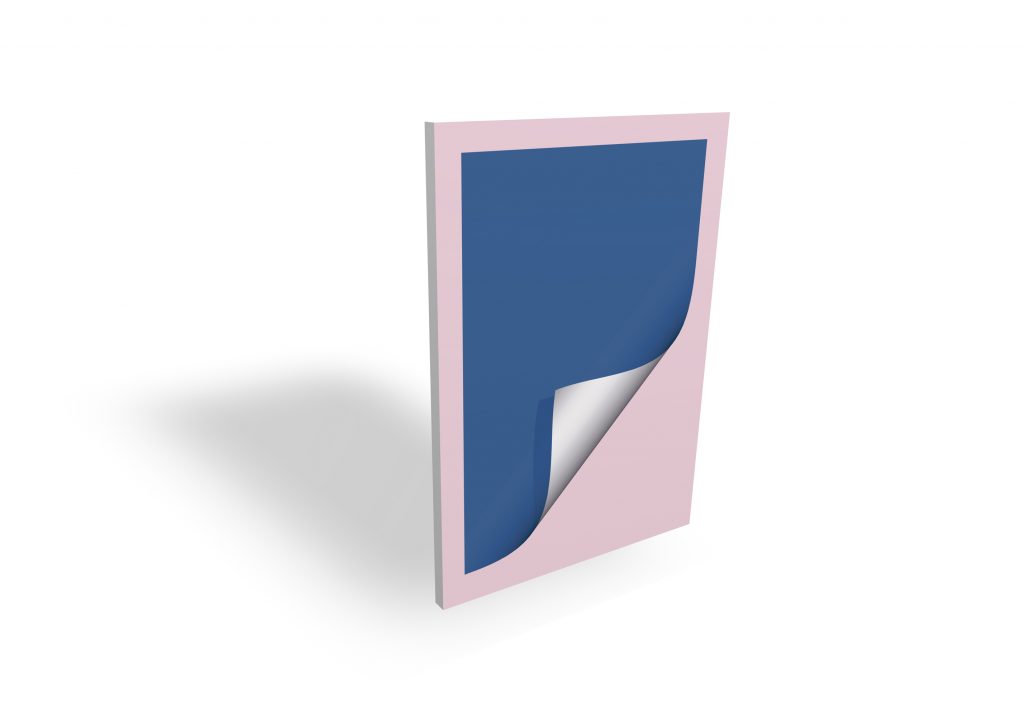
Junk Jet is a collaborative format set up to discuss speculative works across spatial, image, text, and social practices. Coming as irregular series of medial events, and a low-fi paper publication (including weird special gifts) on a non-commercial scale it is edited by Asli Serbest and Mona Mahall and published by themselves.
Excerpt of Junk Jet no. 3 Flux-Us-Flux-You
Junk Jet is interested in works and texts that tunnel those practices with obvious lack of any humor or fiction. It is about wild forms and found objects, about weird theories and (small) narratives, anti-fashions and non-styles, about exploring do-it-yourself works, accidental outcomes, deviant and normal aesthetic forms that result from jammed common practices, old media, and subverted customary tools. It is about cultivating an anti-heart by “introducing noise to signal”. Whereas n°1 experiments with the topic of failure, or better: noise, n°2 is especially into architectural and spatial works. The n°3 flux us! flux you! issue focuses on temporary types, on stable happenings and unstable thoughts: boogie buildings, rolling rocks, flying architectures, provisory pyramids, lifted cellars and dug in landmarks, curtains, mobiles, house boats, bubbles, zeppelins, flying saucers … The n°4 deals with making something out of nothing and contains works that move from mumbo-jumbo to real magic and back. Issue n°5 is an archive impossible with reflecting net.heart of internet culture. It transfers internet things from their digital space into a paper jet. n°6 here and where issue is all about local forms and spaces faced with a global culture.
Junk Jet has been exhibited at MOMA: Museum of Modern Art, New York; Los Angeles Forum for Architecture and Urban Design Gallery; Contemporary Art Center La Casa Encendida, Madrid; Perloff Gallery, UCLA Architecture and Urban Design Los Angeles; Kunsthalle Wien, Museumsquartier, Wien; Gallery Vie, Tokyo; Tokyo Art Book Fair; Osaka Art Book Fair; Shibaura House, Tokyo; Vancouver Art Gallery; HKW, Transmediale, Berlin; AA Architectural Association, London; New York Art Book Fair, etc. Solo exhibitions include shows at General Public, Berlin; Ausjunk, Stuttgart; and Vamos, New York.
Feminist Spatial Practices
Open Conversation
German Pavilion
la Biennale di Venezia, Giardini
May 21, 2023
Venice
Urgent Pedagogies
Studio Giardini
la Biennale di Venezia, Giardini
May 17-20,
2023
Venice
Natural Wifi
Screening
E-Flux Screening Room
Brooklyn, NY
May 6, 2022
“Praxis”
Article in: Arch+ (Zeitgenössische feministische Raumpraxis)
2022
Berlin
Horizonte Lecture Series
Lecture
Bauhaus Universität Weimar
June 7, 2022
Weimar
“a woman’s place is in the home”*
Lecture and Discussion
Perspektiven auf Inklusivität – Öffentlicher Raum und Kunst
Galerie Herold
June 5, 2022
Bremen
Digital Twin
Exhibition
Yaz Festivali, Tarabya Kültür Akademisi / Goethe Institut
June 2022
Istanbul
N.N
Sound Installation
Centro Tedesco
April 2022
Venice
Disrupted Landscapes
Video Text
Akbild Vienna
February 2022
Vienna
Artist Talk
Centro Tedesco
January 2022
Venice
Homes of the Internet
Article in: Platform Urbanism / Austrian Pavilion
NAI Publishers
2021
Rotterdam
Research Grant and Artist Residency
Deutsches Studienzentrum Venedig
2022
Venice
Digital Twin
Exhibition
Kunstraum Kreuzberg/Bethanien
Studio Bosporus
September 03 – October 31, 2021
Berlin
Platform Urbanism
Panel Discussions
Austrian Pavilion
la Biennale di Venezia, Giardini
August 28, 2021
Venice
Feminist Spatial Utopias Lexicon
Workshop, print production, presentation
Ural Biennial Public Program
National Center for Contemporary Arts
September 12 – 26, 2021
Yekaterinburg, Russia
Hall of Protocols
Exhibition
together with Aristide Antonas and Elina Axioti
How we live together
la Biennale di Venezia, Arsenale
May 22 – November 21, 2021
Venice
Homes of the Internet
Exhibition
Platform Austria
la Biennale di Venezia, Austrian Pavilion
May 22 – November 21, 2021
Venice
Article and Series of Photographs
in: Platform Urbanism, NAI Publishers, Rotterdam
Feminist Spatial Utopias Lexicon
Article in: 50 Years After 50 Years of Bauhaus
Württembergische Kunstverein Stuttgart, Spector Books
2021
Leipzig
WIP — Work in Progress
Lecture and Discussion with Bruno Alves de Almeida
Instituto
April 22, 2021
Porto
The Law of Withdrawal
Guest critique
ETH Zürich, Department of Architecture
December 15, 2020
Zürich
Domestic Revolution: Audio Cut Up Session
Performance
Conditions of a Necessity
October 3, 2020
Staatliche Kunsthalle
Baden Baden
Sheltering Places
Roundtable
April 22, 2020
The New Centre for Research & Practice
Seattle
Spatial Inserts
Text in: Matters of Communication
transcript
November 2020
Bielefeld
Desert Theory
Talk and Guest Critic
Akademie der bildenden Künste
Antonas Studio
23 November 2020
Wien
Living as Practice
Concept and moderation of the talk series
With Elke Krasny, Pier Vittorio Aureli, Staci Bu Shea, Irene Nierhaus,
Henrike Naumann, Marjetica Potrč et al.
HafenCity University
10 – 24 November 2020
Hamburg
(In)stable Boundaries
Text in: Environment, Space, Place (ESP)
With Marie Ulber
November 2020
Fellowship
Tarabya Cultural Academy Istanbul
Goethe Institut
February – May, September 2020
Istanbul
Spatial Practices that Allow for Relevant Questions
Talk
Technische Universität
October 2020
Wien
Sections Through a Space
Talk
Hochschule für Gestaltung
June 2020
Karlsruhe
Museum Format
Guest Critic
ETH / Antonas Studio
27 May 2020
Zurich
The Fatigue Museum
Exhibition
Symptom Bauhaus
West Den Haag [New Museum of Contemporary Art]
September 28 — December 31, 2019
Den Haag
Female Futures Lexicon on Space
Publication in: Critical Spatial Practices
December 2019
London
The Grand Domestic Revolution
Talk at TUM Faculty of Architecture
December 19, 2019
Munich
The House Alice Built
Publication in: Critical Spatial Practices
December 2019
London
Particular Cases and Situated Practices
Concept and moderation of the talk series
With Hila Peleg, Aristide Antonas et al.
HafenCity University
November 2019 – January 2020
Hamburg
Der Apfel ist kein Apfel. Der Apfel ist etwas ganz anderes.
Scenography for Theater.Prekariat
Kirche St. Maria
October 4, 6, 7, 8 and 10, 2019, 8pm
Stuttgart
Sinop Biennial 7. A Politics of Location
Curatorial project
August 16 — September 20, 2019
Sinop
A Politics of Location
Parallel program of the 15th Istanbul Biennial
Tophane-i Amire, Mars Istanbul
September 12 — September 20, 2019
Istanbul
Beyond Repair
Workshop / Performance
German Pavilion, La Biennale di Venezia
June 13 — June 17, 2019
Venice
The House Alice Built
Publication in: Arredamento Magazine
September 2019
Istanbul
Sinop Biennial 7
Article and interview in: Istanbul Art News
September 2019
Istanbul
Space remains a Lout
Talk at Architecture and Motion Symposium, Studienstiftung,
September 27, 2019
Berlin
n-1
Exhibition
Schluss mit reden, spielen wir!
Kunsthalle Lingen
June 08 — August 25, 2019
Opening on June 7
Lingen
Sinop Biennial 7
Article and interview in: Sanat Dünyamiz
July 2019
Istanbul
Disguised
Publication in: Made Up. Design Fictions, JRP/Ringier and MDP (Art Center)
May 2018
Los Angeles
Episodes with creatures from the southeast
Text
in: A New Hopelessness. Sener Özmen
Pilevneli Gallery
April 2019
Istanbul
The future of theater as a village
Talk
A project by “Die Institution”
Staatstheater Karlsruhe
March 3, 2019
Karlsruhe
From Phalanstère to Jinwar. Female future spaces
Intervention
Thealit Bremen | Debatterie
February 12, 2019
Bremen
Works
Talk
Kunsthochschule weißensee
January 2019
Berlin
The house Alice built
Exhibition, Publication, Talk
Riverrun, Bunker Exhibitions, Istanbul
December 13, 2018 — January 26, 2019
Istanbul
Junk Jet
Talk
50 Years of Institut Grundlagen moderner Architektur (IGMA)
50 Years of Architecture, Theory and Poiesis
University of Stuttgart/Württembergischer Kunstverein
November 22 — 24, 2018
Stuttgart
Testing University
Concept and moderation of the talk series
With Irit Rogoff, Ahmet Öğüt, Beatriz Colomina, Franciska Zólyom, et al.
HafenCity University
November 2018 – January 2019
Hamburg
Space and scenery
Talk and moderation
Matters of Communication. 15th Annual meeting of the German Society for Design Theory and Research
Karlsruhe University of Arts and Design
November 16 — 17, 2018
Karlsruhe
Ordinary violence
Introduction into film screening
Apartment Projects
September 13, 2018
Berlin
Female futures lexicon
Talk
Württembergischer Kunstverein
September 15, 2018
Stuttgart
50 Years after 50 Years of the Bauhaus 1968
Curatorial work and installation
Württembergischer Kunstverein
May 5 — September 23, 2018
Stuttgart
Female futures
Workshops as part of 50 Years after 50 Years of the Bauhaus 1968
Württembergischer Kunstverein
May 22 — 25, 2018 with Adelheid Schulz
August 24, 2018 with Sheri Wills
Stuttgart
Adaptive utopia
Talk at Adaptivity as Utopia series
Institute for Lightweight Structures and Conceptual Design (ILEK)
University of Stuttgart
May 29, 2018, 7pm
Stuttgart
Paradise wanted
Scenography and medial objects for Theaterprekariat
Schauspiel Stuttgart
June 1, 8, and 9, 2018, 6pm
Züblin Parkhaus
June 26 —30, 2018
Stuttgart
[monuments]
Workshop and exhibition City and Arts Program
Mimar Sinan Fine Arts University
Studio X / Columbia University (GSAPP)
May/June 2018
Istanbul
New York Architecture Book Fair
New York Public Library
June 2018
New York City
Relations
Concept and moderation of the talk series
With Bettina Steinbrügge, Nikolaus Hirsch,
Jean-Philippe Vassal, et al.
HafenCity University
April 11, 2018
Hamburg
Junk Jet 2007 —
Talk
50 Years of Institut Grundlagen moderner Architektur (IGMA)
50 Years of Architecture, Theory and Poiesis
University of Stuttgart/Württembergischer Kunstverein
November 22 — 24, 2018
Stuttgart
Works
Talk in City and Art Series
Mimar Sinan Fine Arts University
March 16, 2018
Istanbul
Places en Relation
Workshop as part of ‚La Nation comme Fiction’ exhibition
Centre Pompidou
January 18 — 21, 2018
Paris
Temporary / Fragmentary spaces
Talk
Hochschule für Künste Bremen
November 2017
Bremen
Temporary forms of the city
Curatorial work, installation, exhibition architecture for Does Permanence Matter?
Pinakothek der Moderne/Architekturmuseum
September 13 2017— March 18
Munich
Everyone’s Monuments are Everyone Else’s Documents
Publication in: Does Permanence Matter? Pinakothek der Moderne
September 2017
Munich
On the possibility of speculation
Workshop and exhibition
Depot Basel
Opening March 25, 2017
Basel
Works
Talk
FHNW Academy of Art and Design
March 23 — March 25, 2017
Basel
Fast Buildings, drawing series
Exhibition
Storefront for Art and Architecture
December 6, 2016 — January 23, 2017
New York
One of the favourite all-girl art collectives
Dazed and Confused Magazine
December 2016
London
Conversation with m-a-u-s-e-r, Köçek Dance Floor Installation at the Istanbul Design Biennial (Turkish)
Interview by Burcu Bilgiç
Arkitera, December 2016
Istanbul
Academic Enrichment Fund
Rhode Island School of Design Grant
December 2016
Providence
What’s the matter? Design for a phygital world.
Talk at Bomontiada
Frame x Istanbul-In Between
October 26, 2016
Istanbul
Is this a simulation?
Talk and exhibition at Simulation: Strategien für einen Entwurf der Gegenwart
HfG Karlsruhe, Karlsruhe Institute of Technology
October 25, 2016
Karlsruhe
Köçek dance floor
Exhibition as part of Istanbul Design Biennial: Are we Human?
curated by Beatriz Colomina and Mark Wigley
October 22 — December 04, 2016
Istanbul
Post—*
A manege for architecture magazine
Contribution to Winter 2016 issue, Preparation for Change: Generations
Munich
Exhibist
Exhibist magazine feature
September 2016 Issue
Istanbul
One and three shows
Talk
June 1, 2016
HafenCity Universität
Hamburg
Out of School
Talk at Podium, Biennale Sessions
May 27, 2016
German Center for Venetian Studies
Venice
Space, shows, spooks
Talk
April 18, 2016
Cornell University
Ithaca
m-a-u-s-e-r works
Talk
March 22, 2016
ΠΑΡΑΠΟΙΗΣΕΙΣ: Postgraduate Program Instead, University of Thessaly
Studio at Freie Universität
Berlin
Spatial dynamics
Talk
Rhode Island School of Design
March 16, 2016
Providence
Works
Talk
College of Architecture, Design, and the Arts, University of Illinois at Chicago (UIC)
February 29, 2016
Chicago
Where Lies are no secrets: L.A.’s techno-landscape
Contribution to Publication, Exhibition
Stereo-Reality curated by Ulya Soley
Secrets are Lies curated by Berk Çakmakçı
February 6, 2016 — February 27, 2016
Proto5533
Istanbul
Teaching / Exhibition: Take your favorite project. Zoom it. Hate it. Crack it. Kill it. Photoshop it. Turn it. Scale it. Copy it. Paste it. Fix it.
Master Studio Conceptual Architecture
University of Stuttgart
February 4 — February 14, 2016
LOTTE
Stuttgart
Teaching / Exhibition: Stones — Din 4022
Cross-Disciplinary Studio
Karlsruhe University of Art and Design
February 3, 2016
Projektraum ßpace
Karlsruhe
#006 The architect has always been a heroic figure of crisis
m-a-u-s-e-r interview by Luca Marullo
December 2015
Aformal Academy
Milan
Bronze Dragon Award
Now, There: Scenes from the Post-Geographic City
December 2015
Shenzhen Bi-City Biennale of Urbanism/Architecture
Shenzhen
Where is Now? When is There?
Roundtable
December 5, 2015
Shenzhen Bi-City Biennale of Urbanism/Architecture
Shenzhen
Natural Wifi
Exhibition as a part of Now, There: Scenes from the Post-Geographic City
December 4, 2015 — February 2016
Shenzhen Bi-City Biennale of Urbanism/Architecture
Shenzhen
Works
Talk and Studio Review
November 11, 2015
ETH Zurich, Faculty of Architecture and Urban Design
Plans and Politics
Zurich
Extreme Land
m-a-u-s-e-r conversation by Luca Marullo
October 13th, 2015
ATP DIARY
Milan
Soft Brand Architecture
Publication in: No Internet, No Art: A Lunch Bytes Anthology
Onomatopee Publications Eindhoven
October 2015
Eindhoven
From Inside
Talk and Discussion
October 8th, 2015
University of Applied Sciences Koblenz
Faculty of Architecture
Koblenz
m-a-u-s-e-r conversation by Mike Winder
for Art Center Los Angeles
August 19th, 2015
Los Angeles
Kam Workshops 2015. Artificial Natures
Workshop
invited by Architecture Syndicate Athens and the Center of Mediterranean Architecture (KEPPEDIH-CAM)
August 17th — 24th, 2015
Crete
Natural Wifi. Material Culture of the Digital
Exhibition and Book Project
August 13th — September 20th, 2015
Art Center MDP
Los Angeles
Collision(s) 3
Talk at the Frog
August 14, 2015
Los Angeles
One Palm Tree Long
Drawing for Measure Exhibition
Opening August 13th, 2015
Storefront for Art and Architecture
New York
Art Academy Award
Best Studio — Teaching Award
July 27th, 2015
Stuttgart State Academy of Art and Design
Stuttgart
Architect As Curator As Architect
Concept and Moderation ‘Jour Fixe’ Lecture-Series
With Felicity D. Scott, Joseph Grima, Jane Rendell, Alex Lehnerer, Ines Weizman, Carson Chan
April — June 2015
Stuttgart State Academy of Art and Design
Stuttgart
Spuren spuren. all in golden ratio
Exhibition (Opening with a talk by Keller Easterling)
May, 22th, 2015
Württembergische Kunstverein
Stuttgart
PAPERVIEW
Talk and Discussion
April, 21st, 2015
Princeton University School of Architecture
Princeton, NY
Spuren spuren roundtable
Talks and Conversation
With Marina Fokidis, Andreas Angelidakis, Angelo Plessas, Elina Axioti, Evelyn Steiner, Adelheid Schulz
March, 27th, 2015
ΡΟΜΑΝΤΣΟ
Athens
Spuren spuren project
Collaborative Project, Research, Exhibition, Book
Architecture and Performance
March — May 2015
Athens, Stuttgart
Methods of making
Talk at “Architectural Media and Publishing”
March, 19th, 2015
Sci-Arc (Southern California Institute of Architecture)
Los Angeles
Mission, Media and Manicure. Venice Architecture Biennale 2014
March, 12th, 2015
Art Center MDP
Los Angeles
Cows When Reading JUNK JET Produce More Milk
Magazine Launch
February, 8th, 2015
Corner College
Zürich
Gesammelte Landschaften
Itinerary, series curated by Lea Letzel and Ivna Žic
Literaturhaus
February, 2015
Stuttgart
Zukunft 2: “The Future Is Not What It Used To Be”
Concept and Moderation ‘Zukunft #’ Lecture-Series
With Deniz Ova, Istanbul Design Biennial Director
Dj/Vj-Set Charlie Mubarak
Aktionsraum, Stuttgart State Academy of Art and Design
January, 30th, 2015
Stuttgart
Design Methods
Presentation
Faculty of Architecture, Technical University Munich
December, 3rd, 2014
Munich
Lunch Bytes: Centre for Contemporary Arts Glasgow
Talk series, curated by Melanie Buehler
September, 25th, 2014
Glasgow
8 Statements on the US Pavilion
Text and images (as a part of the US Pavilion)
in: Volume Magazine vol. 41
Amsterdam
Art Academy Award
Best Studio — Teaching Award
July 22th, 2014
Stuttgart State Academy of Art and Design
Stuttgart
‘META’ Digital Art Biennale
Exhibition, curated by Emily Gervais, David Quiles Guillo
July, 19th – September, 19th
180 Creative Camp
Abrantes, Portugal
Residency at OfficeUS
Representing the U.S. Pavilion, commissioned by Storefront for Art and Architecture, at the 2014 International Architecture Exhibition –
la Biennale di Venezia
June, 4th – November, 23rd, 2014
Venice
Friends of Art Academy Award
Best Exhibition — Teaching Award
Juni 22th, 2014
Freunde der Akademie Stuttgart e.V.
Stuttgart
AIRBNB Pavilion
Exhibition at 14th Venice Architecture Biennale, curated by architects Alessandro Bava, Octave Perrault, Luis Ortega Govela and Fabrizio Ballabio
June, 4th – June, 6th, 2014
Venice
Clusters and Crystals: Observing at Point Zero
Exhibition, Sinopale 5, International Sinop Biennial
July, 12th – August, 17th, 2014
Sinop, Turkey
3 1/2D Book
Idea and Editing
Klasse 2G (ABK Stuttgart, Klasse Mahall/Serbest)
July, 2014
Stuttgart State Academy of Art and Design
Stuttgart
Lend Form. Borrow Content
Essay for The Diagrammatic Practice of the Micropolitical, ed. by Dimitrina Sevova
May, 2014
Zurich
tell.net
Talk, curated by Olia Lialina
May, 14th, 2014
Stadtbibliothek Stuttgart
Stuttgart
BYOB Geneva
Exhibition curated by Σνα Ραραmαrgαrιτι, Σlιαs Cαrellα & Lοïq Sυπer
May, 2nd 2014
Geneva
Karınca Kararınca (on Internet, Ants and Architecture)
Essay for Arredamento. Architecture Magazine
May, 2014
Istanbul
Zukunft 1: “Design der Zukunft”
Concept and Curating ‘Zukunft # Lecture-Series
With Cornelia Lund, Holger Lund, Eva-Maria Offermann, Klaus Birk
Dj-Set Global Pop mit DJ Jaywalk
April, 30th, 2014
Aktionsraum, Stuttgart State Academy of Art and Design
Stuttgart
Second Nature: El Corbusier
Exhibition: Letters to the Mayor
April 2014 (opening on April 29)
Storefront for Art and Architecture
New York
Post-Post-Post-Konzept
Essay for the book “Design der Zukunft”
published by avedition
April, 2014
Made Up / Guises
Graphical essay
published by JRP | Ringier
2014
Zurich
The 3rd Eternal Internet Brotherhood/Sisterhood
Collaborative project and exhibition
April 2014
Gen Eidi, Israel/Palestine
Club to Club
Art direction, concept, lecture (for It’s Istanbul)
April, 2014
Salt, Borusan Contemporary, Babylon, Peyote, etc.
Istanbul
Architecture and Pudding
Talk at “Architectural Media and Publishing”
March, 28th, 2014
Sci-Arc (Southern California Institute of Architecture)
Los Angeles
Sacred Spaces
Exhibition
March, 2014
Visual Culture Research Center
Kiev
AArchitecture
Publication, interview
coming up, 2014
Architectural Association
London
Transmediale, Internet Yami-Ichi
Exhibition
January 2nd, 2014
Haus der Kulturen der Welt
Berlin
Tribute to the Love Letter
Exhibition
coming up, 2014
The Gallery Presents
Arnhem
New Old Black Forest
exhibition curated by Sebastian Zimmerhackl
January, 2014
E-Werk
Freiburg
Architecture, Concept, and the Jet Train
talk
November, 22nd, 2013
It’s Open
Istanbul
Junk Jet
exhibition
November, 4th – November, 22nd, 2013
Archizines, It’s Open
Istanbul
Jour Fixe at ABK Stuttgart
talk
November, 19th, 2013
Akademie der Bildenden Künste
Stuttgart
The Diagrammatic Practice of the Micropolitical
talk, curated by Dimitrina Sevova and Christoph Brunner
November, 14th – 16th, 2013
Kunsthof Zürich
Zürich
1:1
talk in the discussion series curated by Elvia Wilk
November, 13rd, 2013
Import Projects
Berlin
The Wrong Biennale
Exhibition RichBB, pavilion curated by Emilie Gervais
opening on November, 1st, 2013
The Wrong – New Digital Art Biennale
Vancouver Art / Book Fair
Exhibition & Talk & Publication
October, 2013
Vancouver Art Gallery
Vancouver
Exhibition: Junk Jet
Archizines
September, 13th – November, 2nd, 2013
Public Works Gallery
Chicago
konze.pt
Concept and design of Master Program “Konzeptionelles Entwerfen”
September, 2013
Universität Stuttgart
Stuttgart
newoldblackforest
Collaborative Project and Exhibition
September, 22nd – 29th, 2013
Feldberg
Künstlerhaus Held
Exhibition with Chrissi Nasz
September, 2013
Künstlerhaus Held
Merseburgerstraße/Demmeringstraße
Leipzig
Vilnius Book Festival
Exhibition
September, 14th – 16th, 2013
Titanikas, design and technology center
Vilnius
Exhibition: Junk Jet
Archizines
September, 12th – 20th, 2013
Foundation Serra Henriques
FSH Arts Centre
Lisbon
Theory of the Impossibility of a Theory of Error
essay in Perspecta 46 Error issue, MIT Press
August, 2013
Meet in Real Life
Collaborative project and exhibition with fourfivex
July, 11th – 15th, 2013
Project Space
Frankfurt
42 / Arte TV
Set design, art direction, concept/editorial for Arte TV
July, 2013
Strasbourg
Exhibition: Junk Jet in Venice
Video, Graphics, Publication
The Ship & Archizines Venezia
July, 3rd – 18th, 2013
Venues: Chiostro Dei Tolentini, Giardino di Ca’ Tron, Chiostro della Madonna dell’Orto, Fondation Wilmotte, Cotonificio Santa Marta, Giardino di Palazzo Contarini del Zaffo, Serra dei Giardini, IUAV
Venice
Interview: m-a-u-s-e-r [German, Spanish]
with Goethe Institut
June, 2011
Madrid
Franz Kafka: The Castle
Theater architecture, video projections, graphics
May, 7th – 11th, 2013
Wilhelmspalais
Stuttgart
Zebra Drove at SPAMM ~ SAFARI ~ 2013
Video
Exhibition curated by LaTurbo Avedon and Michaël Borras AKA Systaime
May, 2013
Super Modern Art Museum SPAMM
Libros Mutantes Madrid Art Book Fair
Exhibition & Talk & Publication
Talk: April, 27th, at 20.00
April, 2013
Contemporary Art Center La Casa Encendida
Madrid
Interview at absolutnetwork
with Silvia Bianchi
April, 2013
What’s my Line. Architecture without Discipline
Talk
April, 23rd, 2013
TU Berlin, Architecture Building
Berlin
The 2nd Eternal Internet Brotherhood/Sisterhood
Cooperative Camp
April, 14th – 18th, 2013
Mexico
Exhibition: Junk Jet n°6
Archizines
April, 12th – May, 31st, 2013
Perloff Gallery
UCLA Architecture and Urban Design
Los Angeles
Exhibition: Junk Jet n°6
Archizines
April, 4th – 27th, 2013
Australian Centre for Design
Sydney
Intervention for Walker Art Center: The Gradient
March, 2013
Walker Art Center
Minneapolis
Exhibition: Junk Jet n°6
Archizines
February, 1st – March, 28th, 2013
RMIT Design Hub
Melbourne
From Dark Tourism to Black Box
Talk at The Digital Sublime
January, 15th – 17th, 2013
TU Berlin
Berlin
Exhibition: Junk Jet n°6
Archizines
November, 16th – January, 11th, 2013
Irish Architecture Foundation
NCAD Gallery
Dublin
Publication: Junk Jet N°6. Here and Where Issue
Magazine
December, 12th, 2012
Stuttgart
Disco Sleaze
Exhibition
November / December, 2012
Cregg Castle Arts Venue
Corrandulla, Co Galway, Irland
Interviewed by Pasqual Schillberg
Exhibition and Publication: Amen Adorno – Wege aus dem Loop
November 21st, 2012
Akademie der Bildenden Künste Stuttgart
Stuttgart
Publication: ‘Herkes için Mutlu Evler’ (Turkish)
Taraf Daily Newspaper, Contemporary Art Page: ‘Güncel Sanat Defteri’
November 27th, 2012
Istanbul
Exhibition: Junk Jet
November, 6th – 10th, 2012
Casa del Pingone
MAG|IS|IN
Turin
Show: #101112
Show, curated by Nina Wenhart
November, 10th, 2012
Spacebar
Linz
Architecture Without Architecture
Exhibition
October, 19th – 23rd, 2012
Künstlerhaus Stuttgart
Stuttgart
Junk Jet at Spike Island
L.I.E. at Spike Island Book and Zine Fair
October, 20th, 2012
Spike Island, 133 Cumberland Road
Bristol
Exhibition: @ Osaka and Tokyo
Archizines
September, 1st – 17th
de sign de
September, 21st – 23rd, 2012
Osaka Art Book Fair
Tokyo
Presentation: Junk Jet at Zine’s Mate Tokyo Art Book Fair 2012
September, 21st – 23rd, 2012
Kyoto University of Art and Design,
Tohoku University of Art and Design GAIEN CAMPUS
Tokyo
Junk Jet at ZINE*FAIR | Kunsthalle Wien 2012
September, 22nd – 23rd, 2012
Kunsthalle Wien
Museumsquartier Hall 1,
Vienna
Junk Jet in Mexico City
Café Zena
Protasio Tagle 66A
Col. San Miguel Chapultepec,
Mexico City
Cooperative Camp: The Eternal Internet Brotherhood
August, 9th – 15th, 2012
Greek Island Anafi
Award: “Mind Meets Machine” (“Geist trifft Maschine”)
Awards Ceremony of the Competition
June, 30th, 2012
Pfaffenwaldring 7, Room V 7.01, Stuttgart
Exhibition @ LENTYNA
Vilnius self-publishing art event
June, 2012
NDG, National Gallery of Art
Vilnius
Talk: IFFEO. Post-konzeptionelles Design
Design der Zukunft
June, 2nd, 2012
Symposium DHBW Ravensburg
Ravensburg
Inclusion: Junk Jet in Shibaura booklet library
Shibaura House
Tokyo
Exhibition: Le città vivibili
Torino Smart City
June, 2012
MAG|IS|IN
Turin
Talk: What’s My Line?
May 31st, 2012
Offenbach University of Art and Design
Offenbach
POP-UP-THEATER
Die Geschichte meiner Einschätzung am Anfang des dritten Jahrtausends
Pop-Up-Theater
17.5.12, 18.5.12, 19.5.12, 20.5.12, 22.5.12, 23.5.12, 24.5.12
20:30
K1, KEPLERSTRASSE 11
Stuttgart
Talk: Architecture Without Architecture
with DJ Junk and VJ Jet
May, 03rd 2012
Künstlerhaus Stuttgart
Stuttgart
Talk: m-a-u-s-e-r on new media, the internet, zines etc.
as a part of Glasgow International Festival of Visual Art 2012
May, 02nd 2012
Venue: Good Press
Inclusion: Junk Jet in Canada
Project Space
222 E Georgia St
Vancouver, BC
V6A 1Z7, Canada
Exhibition: Festival for the independent magazine
Facing Pages
April 20th – April 22nd, 2012
Trans 6
6811 HR
Arnhem
Interviewed by Angelo Plessas
Silver Couch
April, 21st, 2012
Exhibition: Junk Jet loves Storefront
Archizines
April, 17th – June, 9th, 2012
Storefront for Art and Architecture
New York City
Talk: Exkursion in Google Maps (German)
April 17th, 2012
Berlin Weissensee School of Art
Berlin
Exhibition: Ausjunk
Junk Jet Net.Heart Show
April, 10th 2012
Ausschank Ost
Stuttgart
Exhibition: Junk Jet
dotcom
April, 6th – June, 10th, 2012
Centre d’Art Bastille
Grenoble
Talk: We are all Gadgets
April 4th, 2012
Department of Design
Munich University of Applied Sciences
Munich
Exhibition: net.heart + MoMA
Millennium Magazines
February, 20th – May, 14th, 2012
Museum of Modern Art Library
New York City
Exhibition: Junk Jet in Egypt
In Print
February, 2012
The Town House Gallery
Cairo
Exhibition: Junk Jet n° 5 net.heart-issue at Transmediale
transmediale 2012: in/compatible
January, 31st – February, 5th, 2012
Haus der Kulturen der Welt
Berlin
Publication and Entry: 111 Beste Magazine
January, 2012
Exhibition: Junk Jet in Italy
Archizines
January, 27th – February, 23rd, 2012
Spazio FMG
Milan
Panel Discussion: I love ALDI (German)
»WIE SIEHT BILLIG AUS?
ÄSTHETISCHE FRAGEN AN DAS
DISCOUNT-PRINZIP« with Wolfgang Ullrich and Christian Janecke
January 12th, 2012 at 19:00
Wilhelm Hack Museum
Ludwigshafen
Exhibition: I love ALDI
November 26th, 2011 – February 19th, 2012
Wilhelm Hack Museum
Ludwigshafen
Exhibition: carnEVIL
Maisons Du Mal
October 11th, 2011 at 18:18
Pop-Up Gallery
Keplerstr. 11
Stuttgart
Exhibition: Junking on the Jet
Archizines
November – December, 2011
AA Architectural Association
London
Publication: Eupalinos and the Duck. Conceptualism in Recent Architecture
e-flux, journal #28
October, 2011
New York
Workshop and Exhibition: Kale_Scope
The International Architecture Biennale Antalya
October 27th, 2011 – October 29th, 2011
Antalya
Exhibition: Junk Jet
Futur Cultur Festival
June 2011
Omotesando Hills
Tokyo
Publication: 9.99 € concepts 1
Artist Book
October 9th, 2011
Stuttgart
Radio Program for Deutschland Funk: Modische Moderne (German)
Deutschlandfunk Live-Stream and Frequencies
03.07.2011 (09:30 Uhr) TEIL 1:
Modische Moderne (1/3)
Aufriss der Avantgarden: Dada Dandy und Punk
10.07.2011 (09:30 Uhr) TEIL 2:
Modische Moderne (2/3)
Laufsteg der Architektur: Adolf Loos und das “Andere”
17.07.2011 (09:30 Uhr) TEIL 3:
Modische Moderne (3/3)
Weiße Wand: Le Corbusier und die Mode
Program guest: Mark Wigley
Exhibition: Junk Jet
Book the Book
June 24th, 2011 – June 30th, 2011
Oldschool, Hermanova 37
Prague
Design: The Death of Bunny Munro
Novel by Nick Cave
Media, graphic and stage design for Steinfuß Theatre
June 1st/ 2nd/ 5th/ 7th/ 8th, 2011 at 20:00
Rocker 33
Stuttgart
Exhibition: Junk Jet
»I’ve Zine the Darkness«!
June 3rd, 2010 – June 11th, 2010
dieschönestadt Gallery
Am Steintor 19
Halle an der Saale
Exhibition: Junk Jet
We are closing in 21 days
May 9th, 2011 – May 30th, 2011
Oldschool, Hermanova 37
Prague
Review: Junk Jet
by Maria Azzurra Rossi
April, 2011
Cosebelle Magazine
Publication: Junk Jet in Behind the Zines
March, 2011
Gestalten Verlag
Berlin
Placement: Junk Jet
March, 2011
Colophon International Magazine Biennale
Publication: Wolf and Vampire. The Border Between Technology and Culture
e-flux, journal #23
March, 2011
e-flux journal
New York
Presentation: maus on m-a-u-s-e-r
log & capture v1.2011
March 17th, 2011 at 19:00
Pilum
Stuttgart
Interview: m-a-u-s-e-r on Junk Jet
with Leonardo Calcagno from Baron Magazine for March 2011 issue
March, 2011
Baron Magazine
Montreal
Review: Junk Jet & Occulto 01
by Alice Cannava
January, 2011
2DM Blogazine
Milan
Performance: DJ Junk and VJ Jet
Junk Jet Special
January 22nd, 2011 at 20:00
General Public
Berlin
Review: Junk Jet et al.
by Fabrizio Gallanti
January, 2011
Abitare Blog
Milan
Publication: Size Matters – Faking the Big
December, 2010
Size Magazine
Istanbul
Presentation: Zwischen No Name und Fame
“Ringvorlesung”
December 8th, 2010 – 19:00
University of Applied Sciences
Pforzheim
Exhibition: Junk Jet n°4
VOCO : DESIGNFEST
December 3rd, 2010 – December 4th, 2010
University of Applied Sciences
Würzburg
Presentation: Strategien der Aufmerksamkeit
AMM Symposium zur 12. Internationalen Architektur Biennale Venedig
October 14th, 2010 – 12:30
Venedig
Junk Jet n°4
statistics-of-mystics! issue
is now (10.10.10) available via paypal
October 10th, 2010
Film: If Not for Yourself at Least Forever
Presentation: Junk Jet
Mags we love – der Kölner Battsalon Event and Exhibition
October 8th, 2010 – October 22nd, 2010
Opening, Party, Presentation: October 8th, 2010 at 19:00
DQE-Halle (Design Quartier Ehrenfeld)
Köln
Junk Jet for Her/Him Posters
Auto Publié
September 29th, 2010 – October 3rd, 2010
Art Pop 2010
Montreal
Junk Jet n°3
Fanzines, Teal Triggs Pop-up Exhibition
September 20th, 2010
The Well Gallery at the LCC
London
Film: If Not for Yourself at Least for Her
Film: If Not for Yourself at Least for Him
Magazine Library Exhibition
September 11th – 18th, 2010
Galerie Vie
Tokyo
Asli Serbest and Mona Mahall work in collaborations across spatial, image, sound, and text practices, at the intersection of art and architecture. They often begin their projects by investigating minor finds, fragments, figures, sites, and rites that exhibit discrepancies, but imply spatial agility and generosity, as well as poetic and political possibilities. Whether it be in the form of installation, model, video, sound, exhibition, or publication, all their projects follow a feminist methodology. As such, they constitute less fixed spaces and objects than non-linear physical or digital versions and speculations that share an interest in serial variation and possible distortions of form and scale. They play and replay architectural histories, events, and movements and rethink the re-production of space and implied power relations. The aim is to collectively (re-)consider rejected knowledge and to find alternative modes of organizing our lives, schools, online and offline movements.
Serbest/Mahall exhibit and publish internationally, including at the Biennale di Venezia, Ural Biennial, Kunstraum Kreuzberg/Bethanien Berlin, Riverrun Istanbul, Württembergische Kunstverein Stuttgart, Pinakothek der Moderne Munich, Storefront for Art and Architecture New York, HKW Berlin, Vancouver Art Gallery, Künstlerhaus Stuttgart, New Museum New York; in e-flux journal, Volume Magazine, Perspecta, Istanbul Art News, etc.
They are the editors of the independent magazine Junk Jet.
In 2019, they curated the 7th International Sinop Biennial under the title of “A Politics of Location.” They live and work in Berlin.